Since 2009, Deep Space 8K has been a central highlight of the Ars Electronica Festival and a major attraction at the Ars Electronica Center. Equipped with cutting-edge projection technology, it offers a unique immersive experience that captivates audiences with interactive 3D content, ultra-high-resolution imagery and live performances with stunning visuals. Every year, artists, scientists, and creative technologists from around the globe gather here to showcase groundbreaking applications, gigapixel visuals, and live performances that blur the boundaries between art, science, and technology.
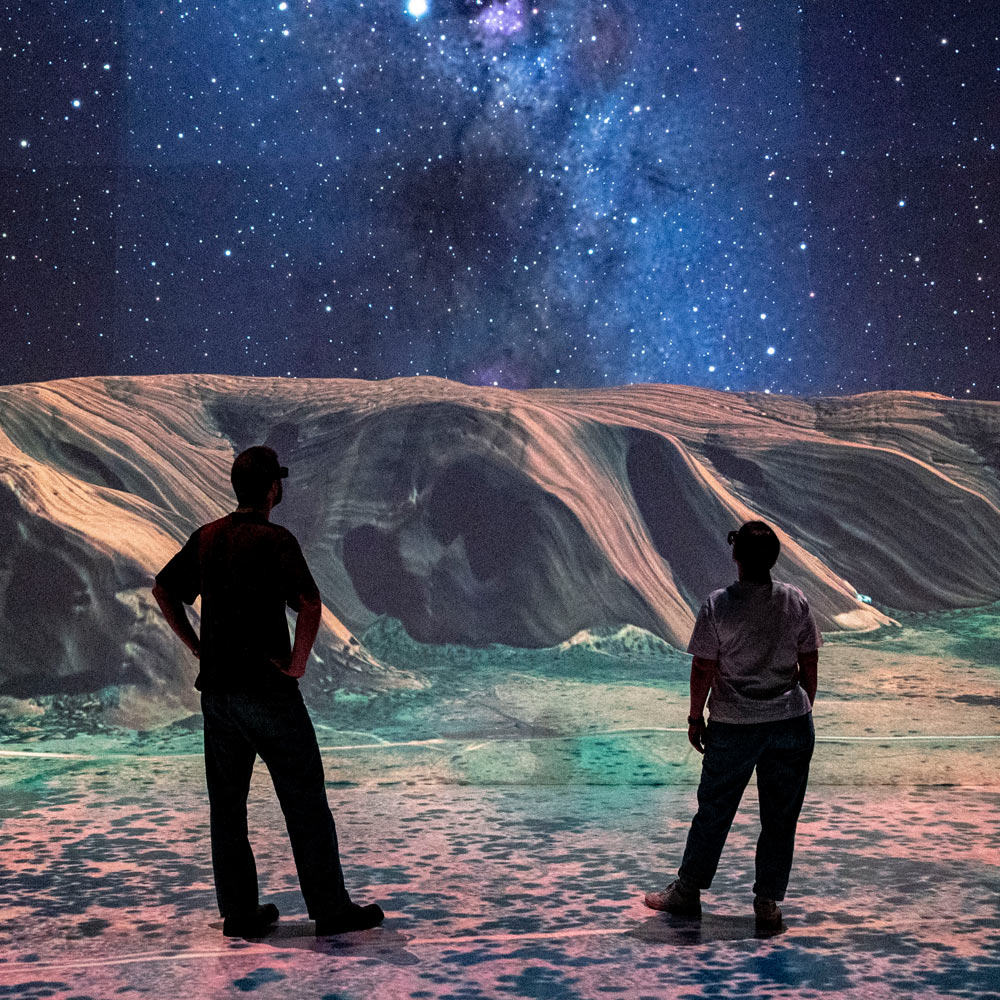
Cultural Astronomy / Melinda File, Benedikt Pfisterer, Lisa Hochgatterer, Dan Tell, Rita Gautschy - Photo: Ars Electronica / Magdalena Sick-Leitner
Deep Space 8K
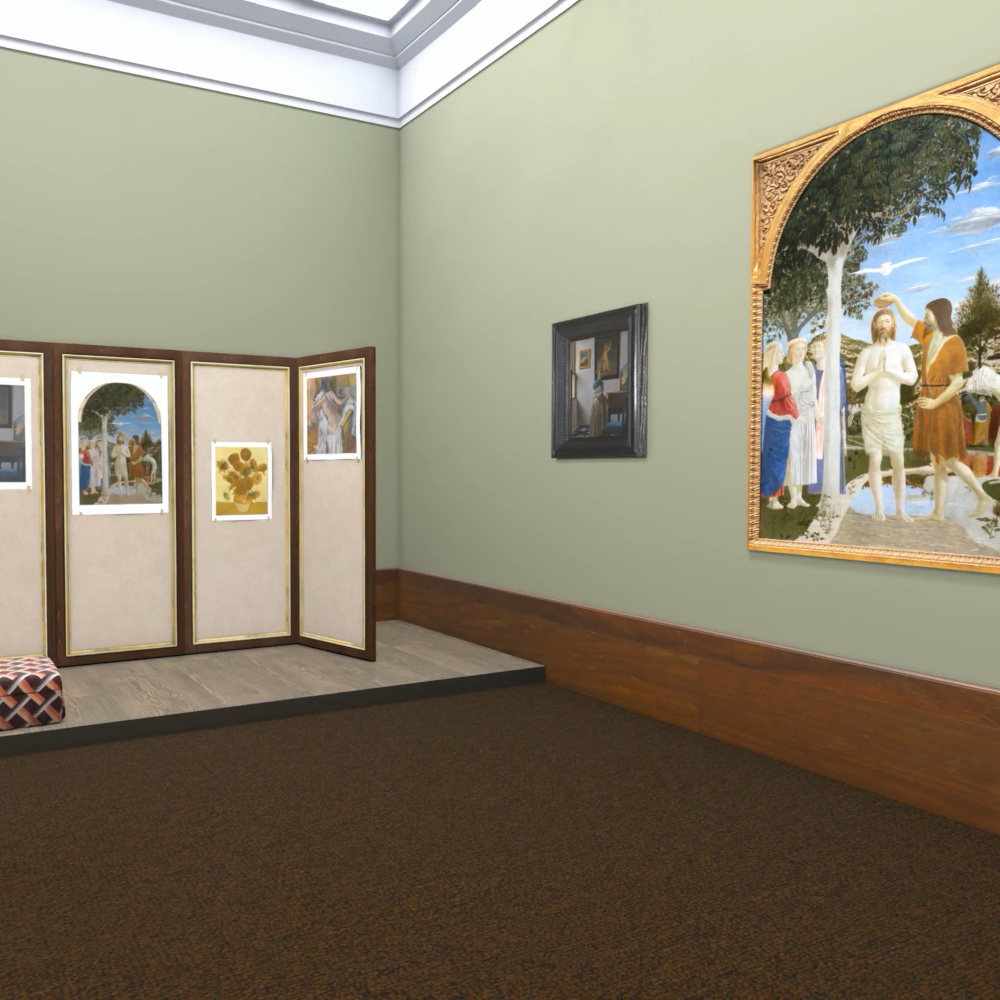
[Re]Curated / National Gallery London
Daniel Herrmann (GB), John Stack (GB), Lawrence Chiles (GB)
The National Gallery, London, is using digital modelling to reimagine how its collection has been seen over time. Through [Re]curated, radical artist-curated exhibitions from the 1970s to the 1990s are brought back to life, exploring how space, technology, and artistic vision shape our experience of art.
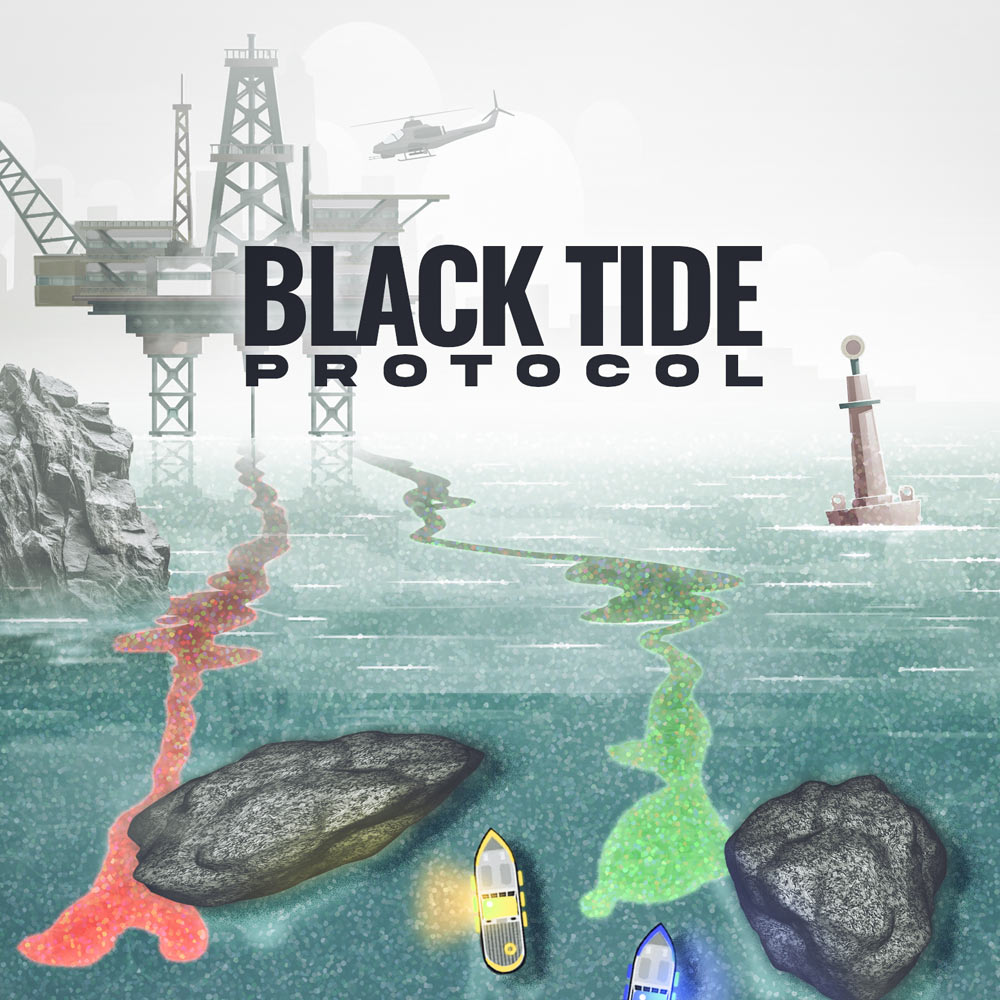
Black Tide Protocol
Luca Geiger (DE), Dino Ponjevic (AT), Alexander Hödlmoser (AT)
A multiuser experience for Deep Space 8K: A defective oil platform spews a deadly, colorful tide into the ocean. Use the lights from your skimmer ships to track down absorbable oil particles and split complex oil mixtures before removing them. Can you stop the black tide before it is too late?

Brosch AI–Distorted Dreams
Celine Pham (AT), Jolanda Abasolo (AT), Victoria Wolfersberger (AT), Juergen Hagler (AT)
Brosch AI–Distorted Dreams explores AI animation in cultural heritage by reimagining the work of Klemens Brosch. The film navigates between inspired and flawed results, revealing the complex dynamics of human-AI collaboration in artistic interpretation.
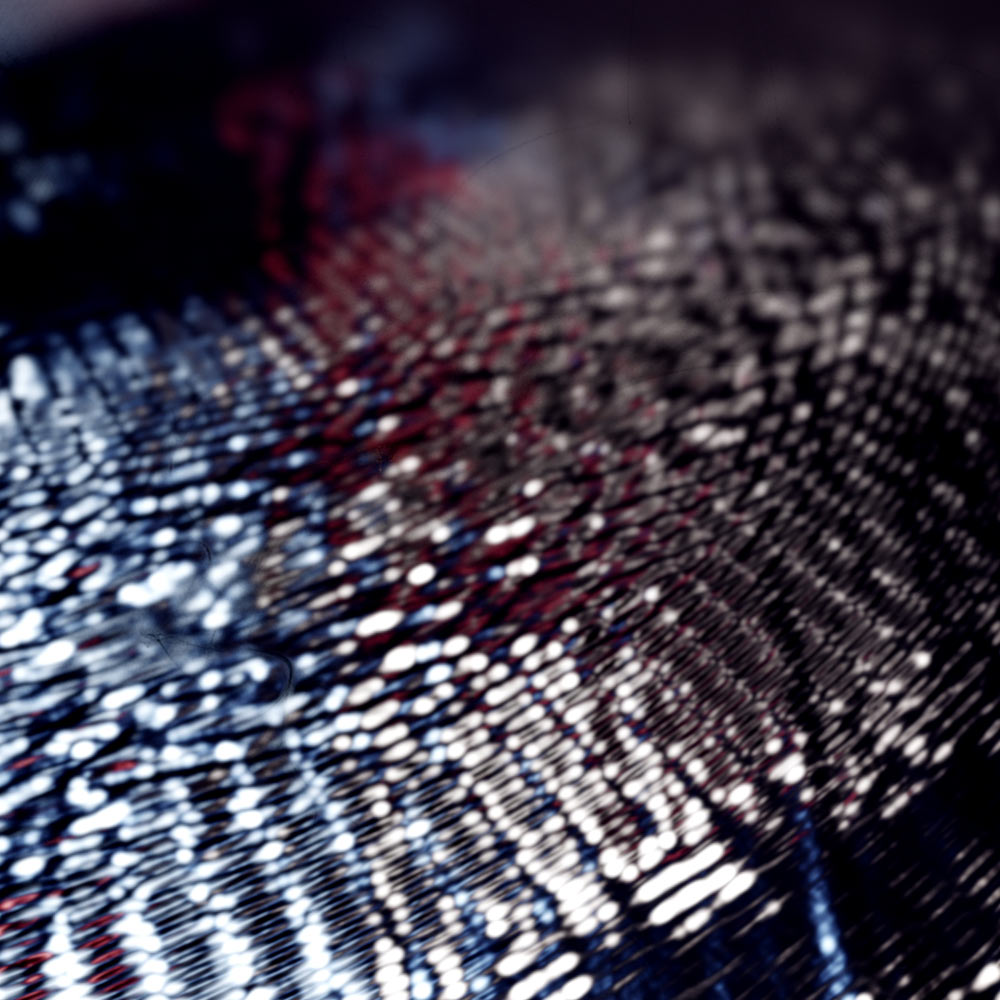
CHROMA
Konstantin Semilakovs (DE/LV), Daniel Oliver Moser (AT)
CHROMA debuts a new composition where piano and generative visuals come alive together in real time. This collaborative project merges sound and color, exploring their rich interaction and unlocking new possibilities for expression and experience.
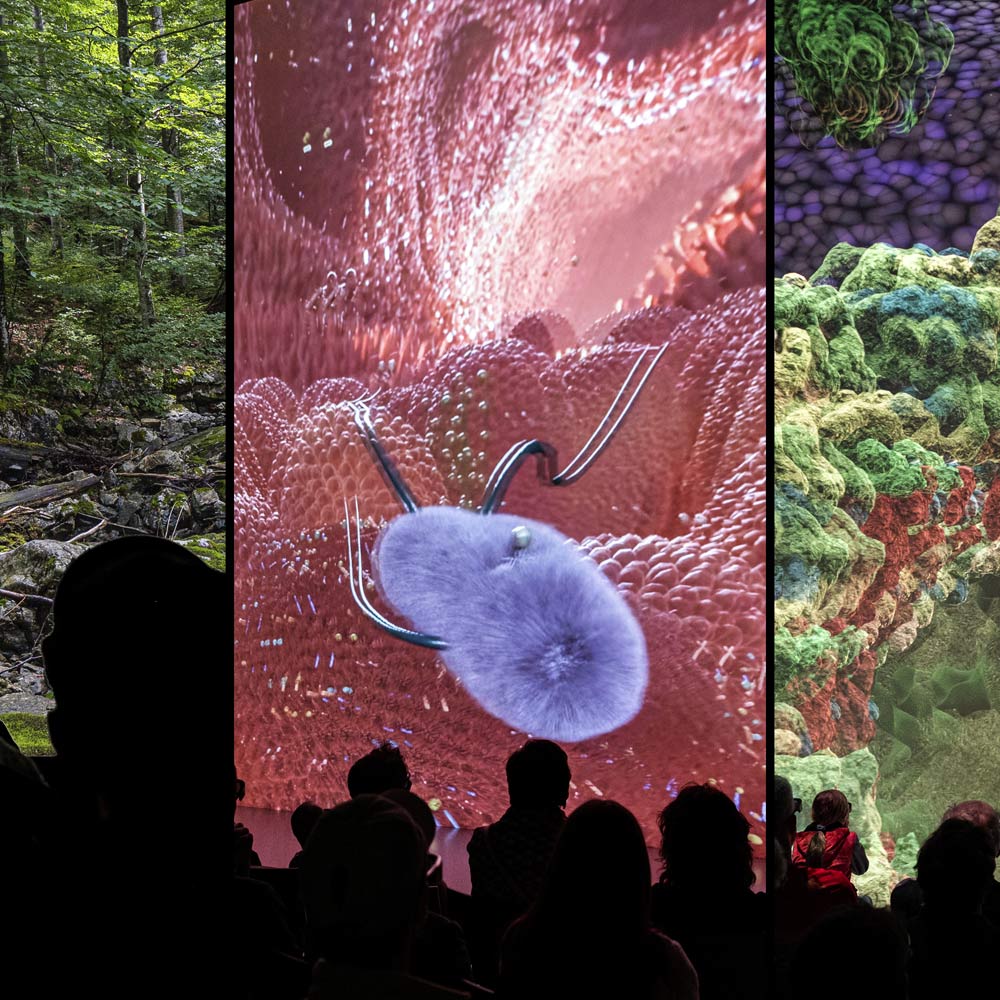
Connected Life
Sebastian Pichelhofer (AT), Sebastian Postl (AT), Valentin Postl (AT), Claudia Puck (AT), Johann Steinegger (AT), Florian Wurster (DE)
From Central Europe’s last primeval forest to the world of microbiomes and the inner workings of a fungal cell, these three seemingly hidden worlds share a vital lesson: they reveal just how complex and vulnerable the web of life truly is.
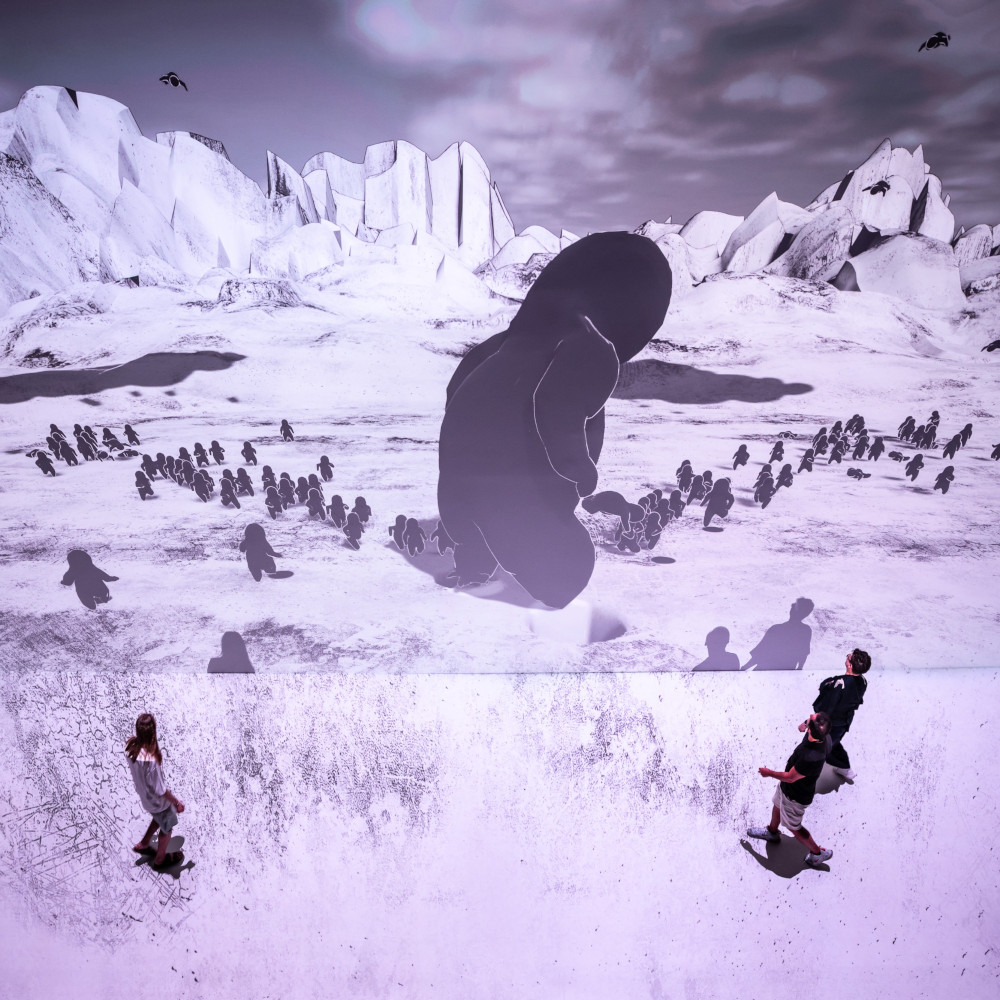
Converge 2
Patrick Berger (AT), Victor Petro (AT), Daniel Rammer (AT), Johannes Pöll (AT)
Converge 2 is the next step in exploring collaborative multiplayer experiences in Deep Space 8K. Extending the original Converge, this iteration expands the concept with refined scenes and experiments with technologies from the SHARESPACE project, aiming to deepen shared presence and collaboration.

Cultural Astronomy
Melinda File (AT), Benedikt Pfisterer (AT), Lisa Hochgatterer (AT), Dan Tell (US), Rita Gautschy (AT/CH)
Journey through time and across continents in Cultural Astronomy, a 3D exploration of ancient sites and sky lore. From Stonehenge to Angkor Wat, discover how civilizations wove the stars into stories, architecture, and meaning—uniting humanity under one celestial canopy.
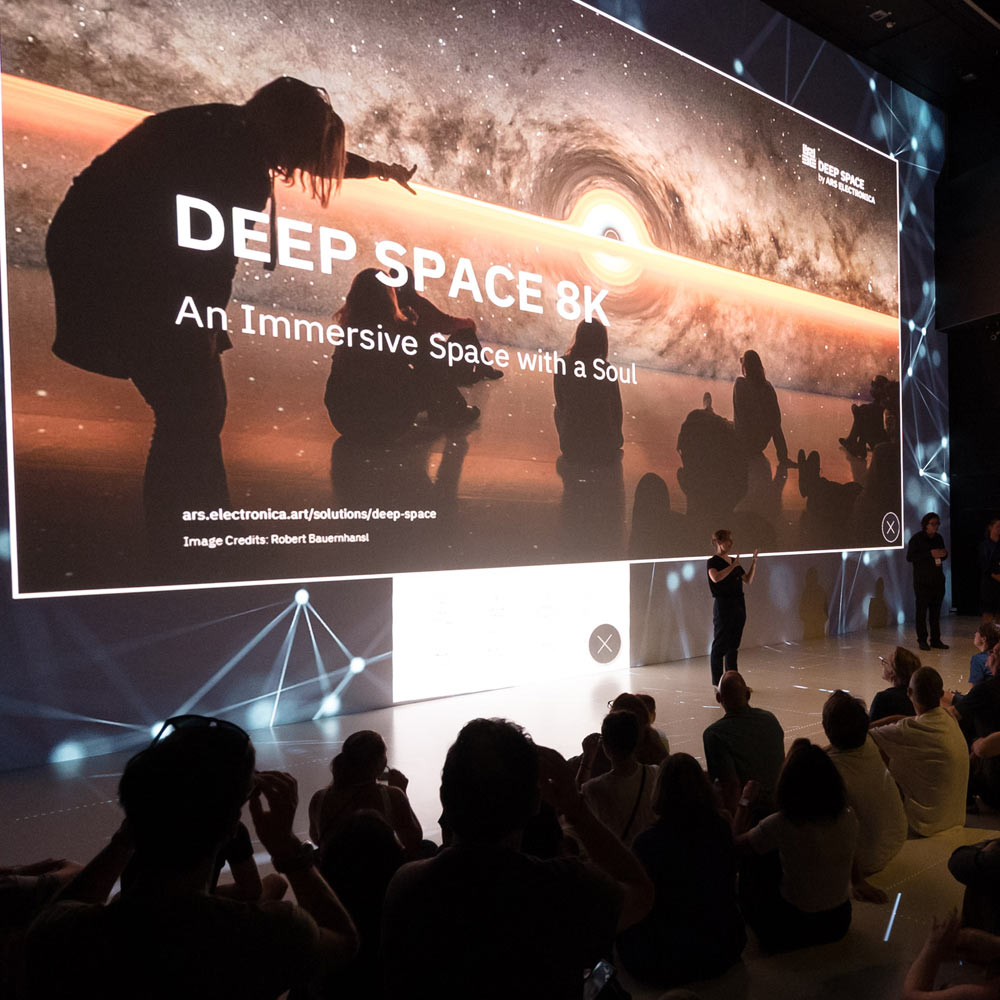
Deep Space Community
Ars Electronica Solutions
Deep Space Community offers a glimpse into a future where immersive spaces form a vibrant, international network for learning and creativity. Institutions from Europe, Asia, and the Americas demonstrate how Deep Space can be flexibly adapted to different cultural contexts.
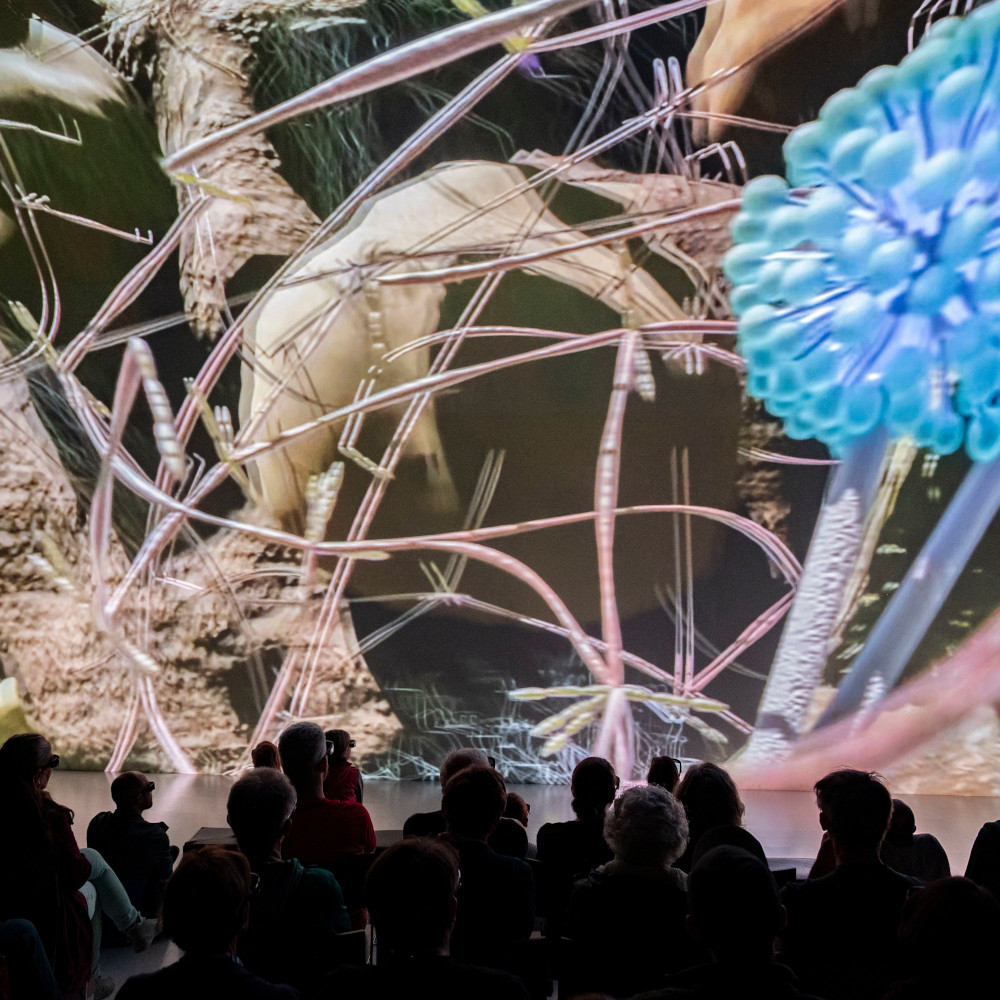
Deep Space Selection
At Deep Space Selection, we present several times a day a changing selection from our diverse program, which we’ve been continuously developing since 2009.
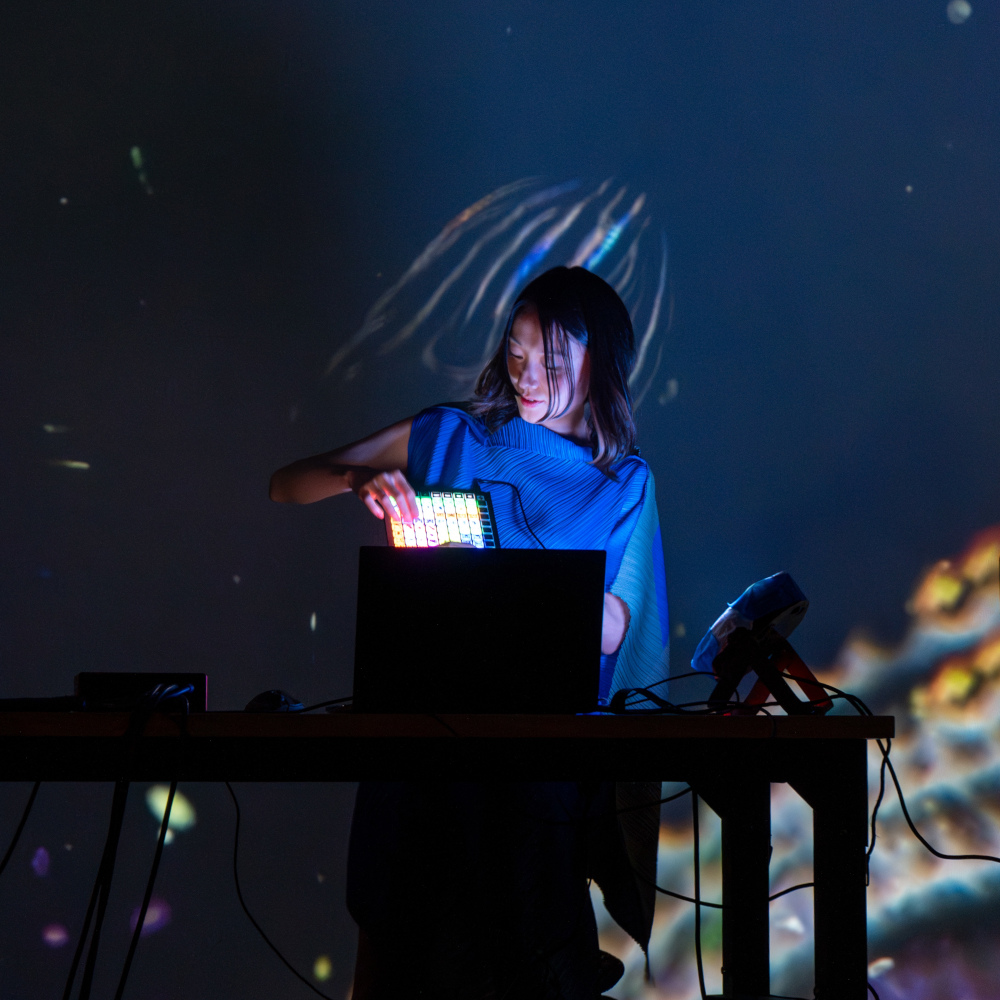
Deep Stage Part I
Jiabao Li (CN), Manu Prakash (US), Will Tallent (US), Michael Bruner (US), Lee Jung In Creation (KR), Itabora Puy (BR), Dino Vicente (BR), Fernando Velázquez (UY/BR)
Deep Stage is a curated performance program at the intersection of music, dance, and media art. International artists present works that intricately interweave sound, body, and image, creating an intense and immersive experience.

Deep Stage Part II
Jiabao Li (CN), Manu Prakash (US), Will Tallent (US), Michael Bruner (US), Zhuojun Li (CN), Darya Sheiko (BY), Darya Kostskina (BY), Junjian Wang (CN), Patrick Ortiz (BO), Christine Haupt (DE), Hanif Haghtalab (IR), Hanna Kortus (DE), Alireza Khosroabadi (IR), MONOCOLOR (AT)
Deep Stage is a curated performance program at the intersection of music, dance, and media art. International artists present works that intricately interweave sound, body, and image, creating an intense and immersive experience.
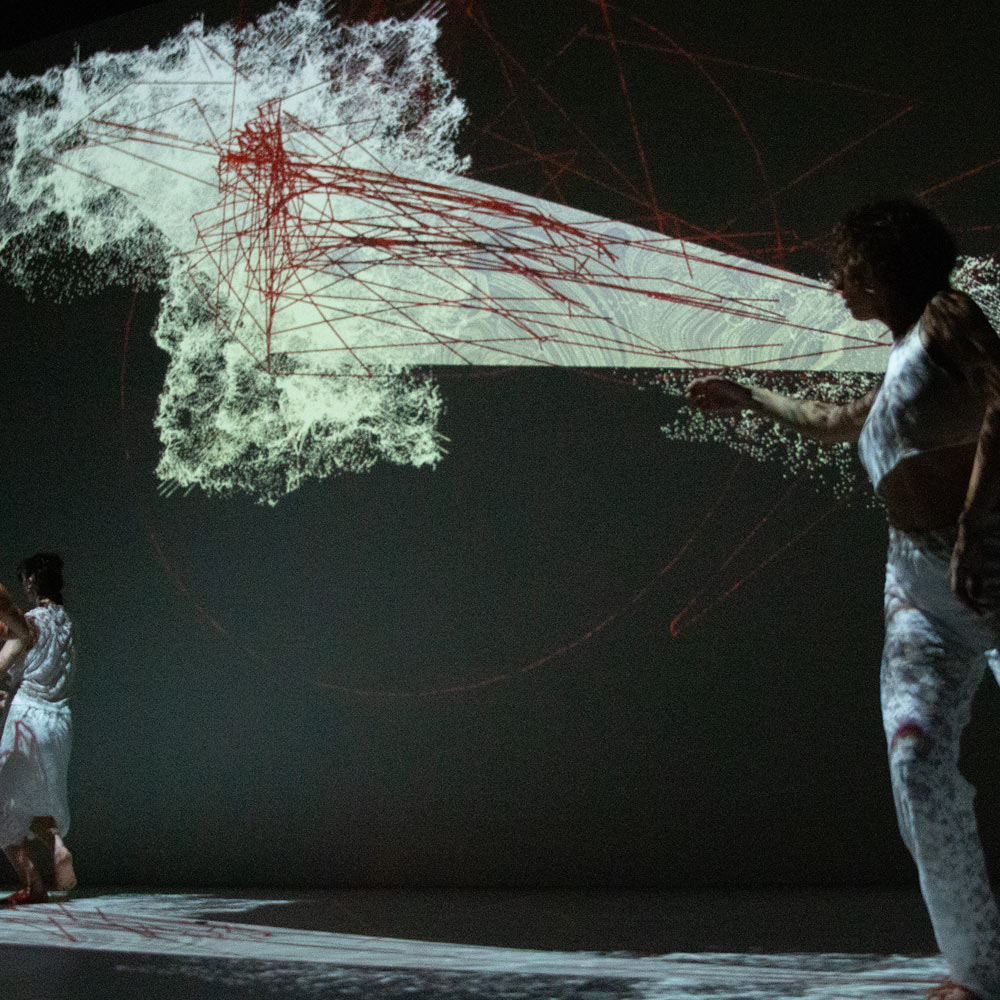
Der Atem 17/19
Lee Jung In Creation (KR)
Der Atem 17/19 is an engaging and immersive dance performance that fuses Korean tradition with a contemporary interpretation. Drawing on traditional rhythms and the “Ganggangsullae” dance, six dancers move in dialogue with a sequence of evolving, dynamic patterns, and irregular forms, creating a compelling interplay of movement and sound.
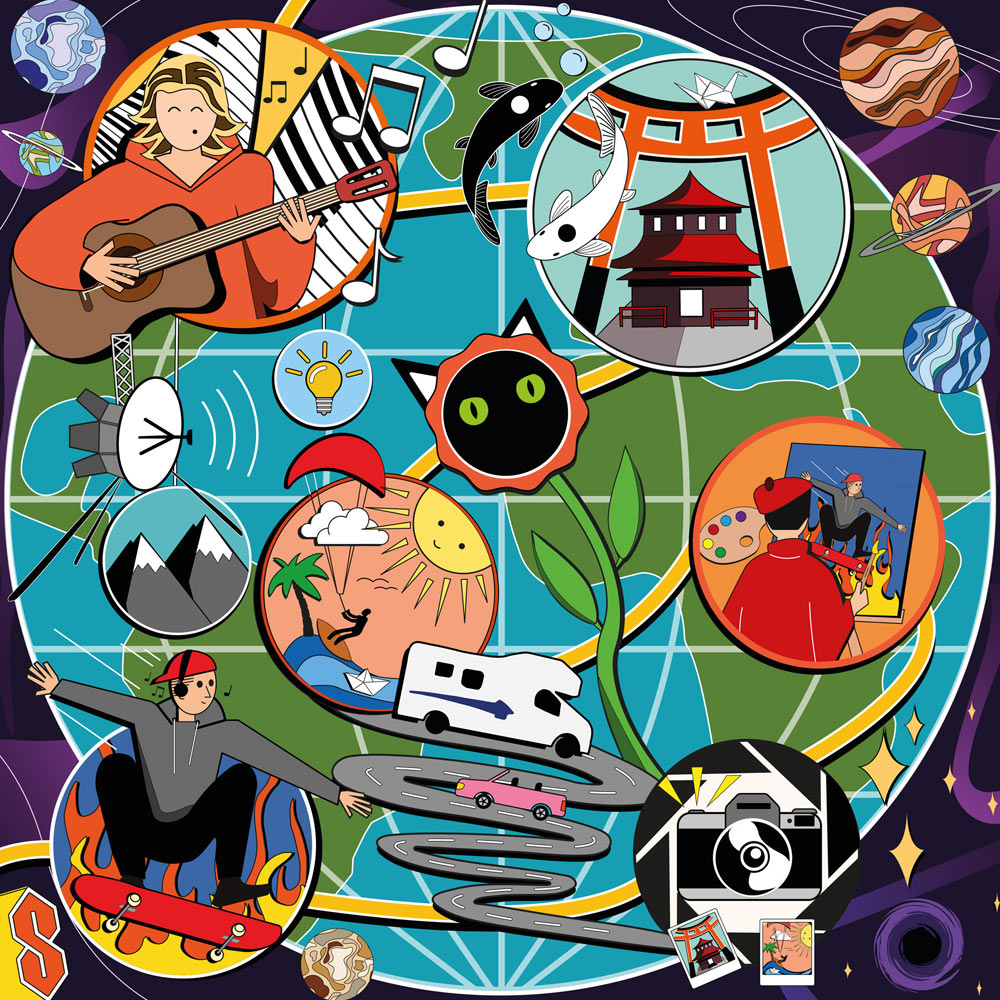
Designing Fortify
MKD–Master School of Communication Design (AT)
The MKD–Master School of Communication Design Linz shares its concepts and creative processes, offering direct insight into the visual narratives and core themes of strength and resilience based on the project Fortify—an augmented comics project shown at POSTCITY.
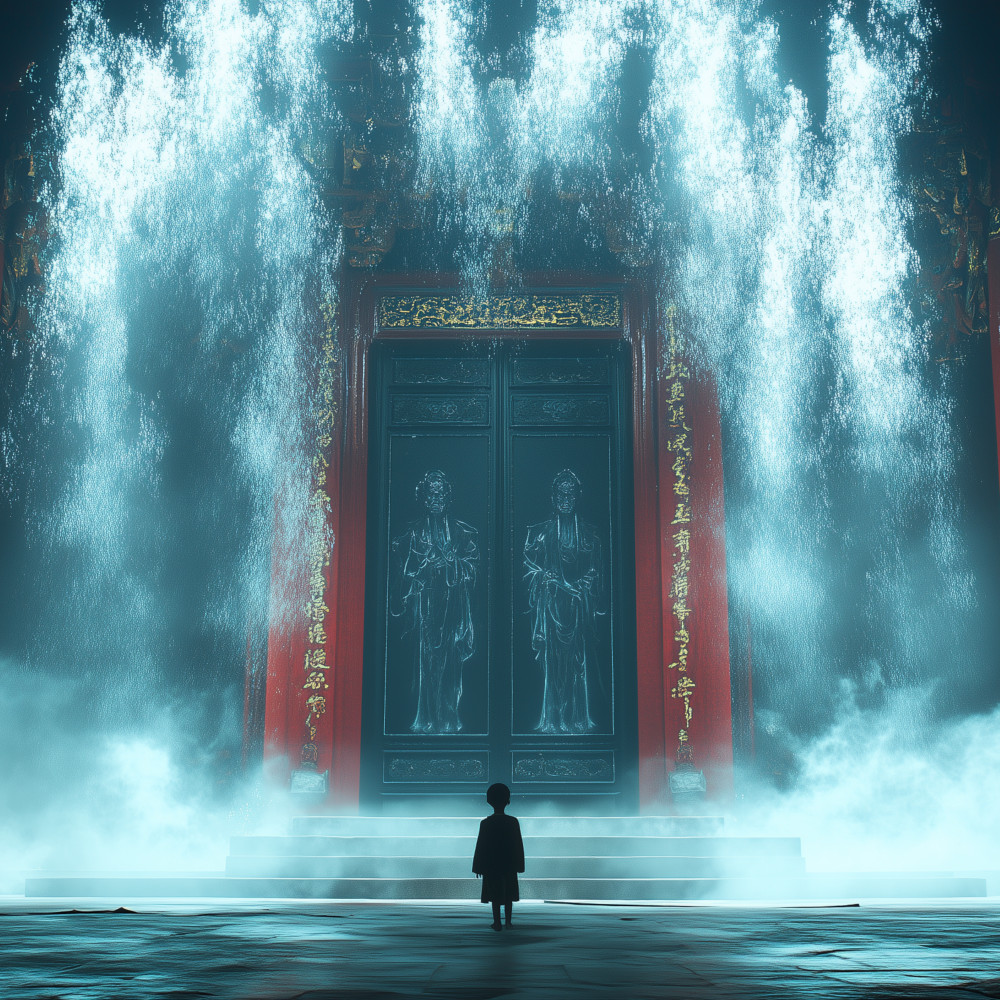
Digital Deities: The Spirit of Restoration
The Metaverse Alliance (TW)
In shifting digital light, AI twin technology merges their forms with yours, creating a dialogue across time. Stand before the digital gate—your image fuses with the divine, inviting you to share in protection and tradition. This union of art and tech honors Taiwan’s spiritual heritage.
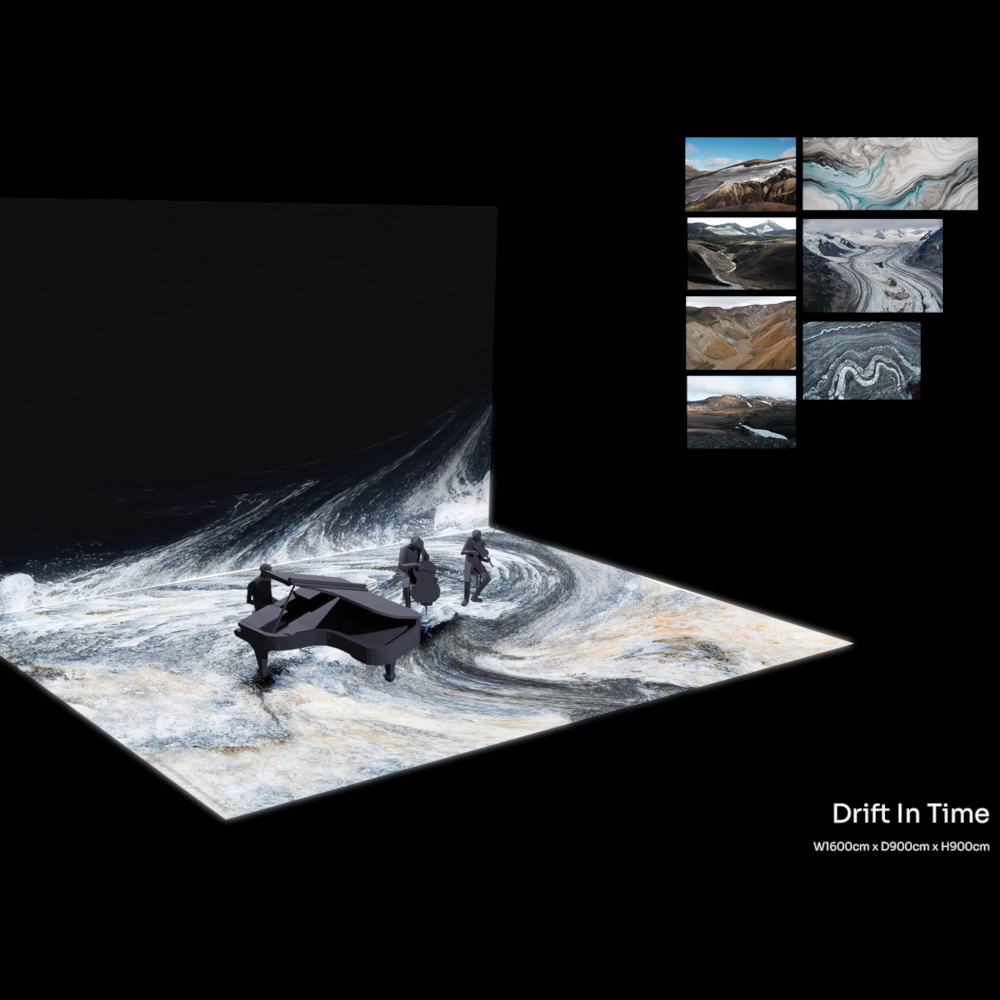
DRIFT IN TIME
ULTRACOMBOS (TW)
DRIFT IN TIME is a live audiovisual performance by ULTRACOMBOS and Cicada, exploring the "memory of ice" and humanity's connection to climate change.
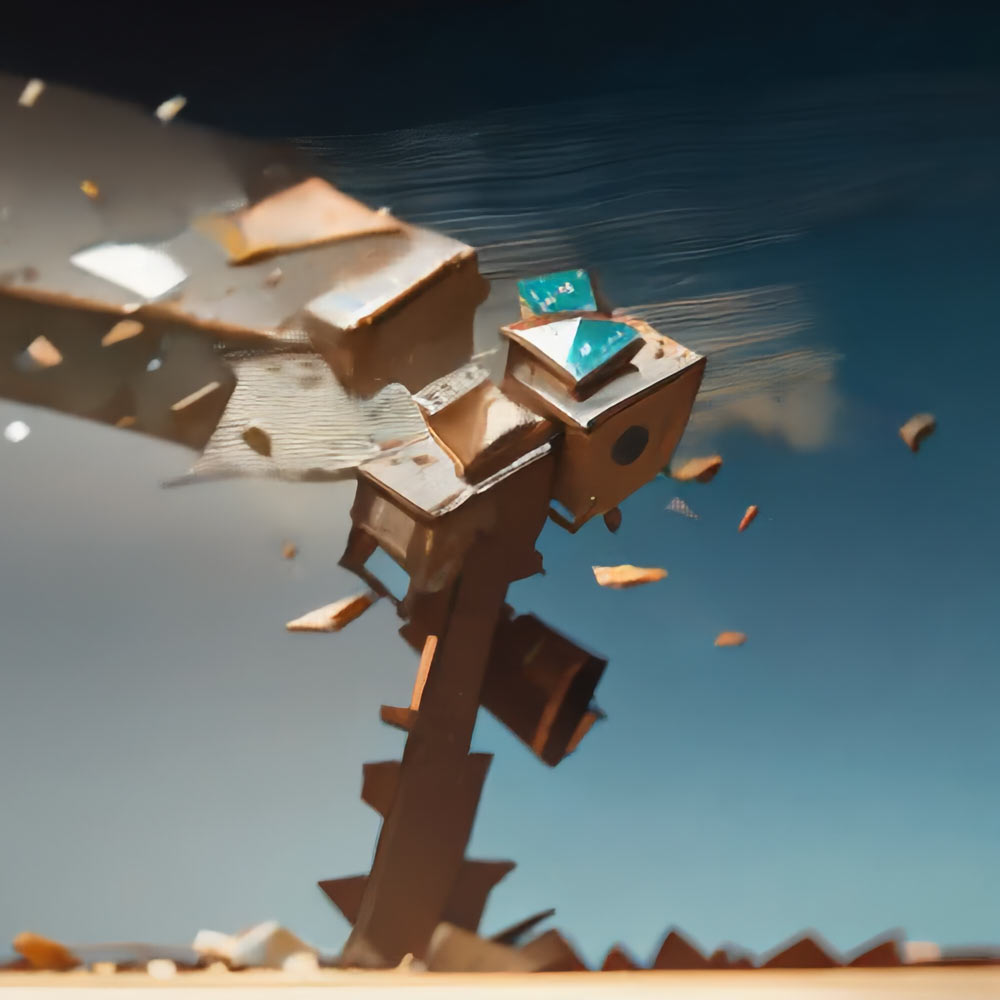
Echoes, Whispers and Memories
Mark Chavez (US), Ina Conradi (US)
Echoes, Whispers and Memories is a site-specific animation that reimagines entropy not as decay, but as a creative force that sparks new forms and ways of seeing. It invites decolonial reflection and explores how memory and change emerge through interconnected cultural and social systems.
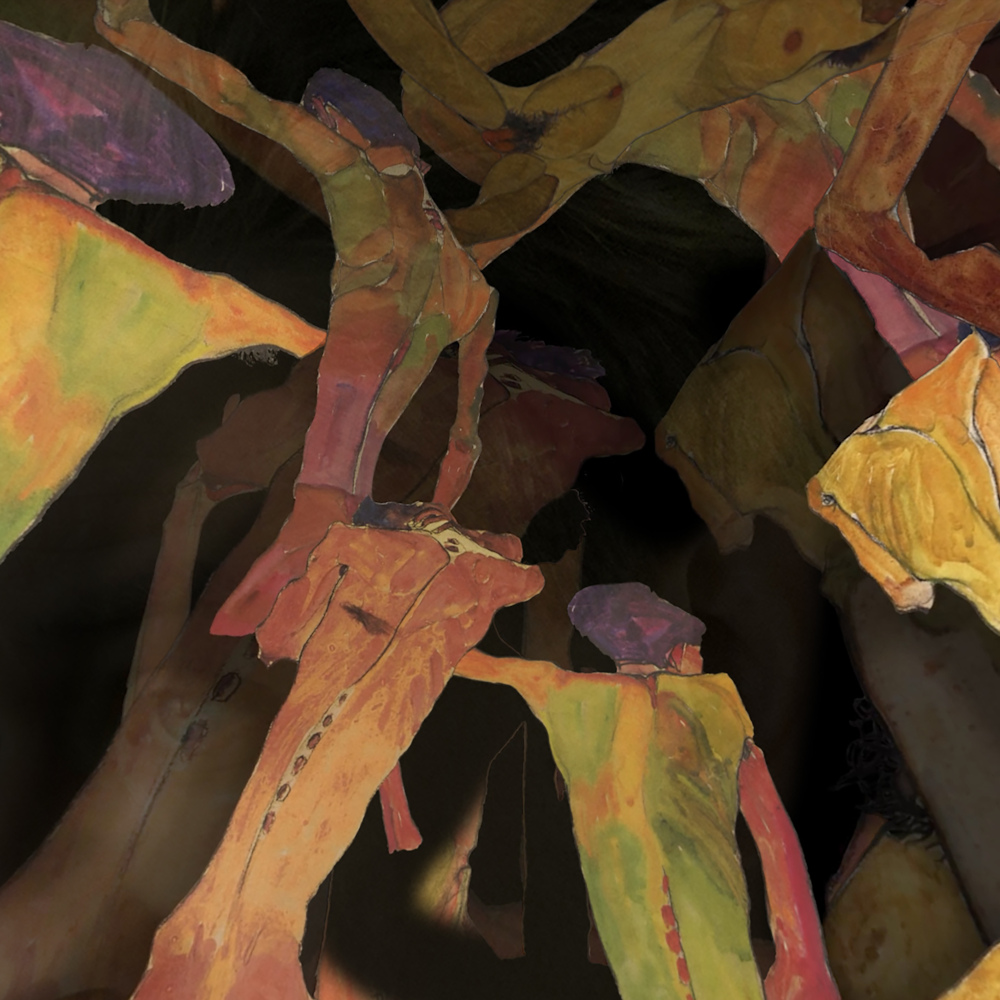
EGON SCHIELE—A Personal Encounter
Gerda Leopold (AT), Sebastian Endler (AT), Michael Geidel (DE)
This presentation offers an intimate view of Schiele’s life and art. We follow his journey through the strict academy, Klimt’s influence, his daring new style, and how Schiele portrayed himself and his models. His landscapes reflect a search for eternity. It ends with his final triumph during the war.
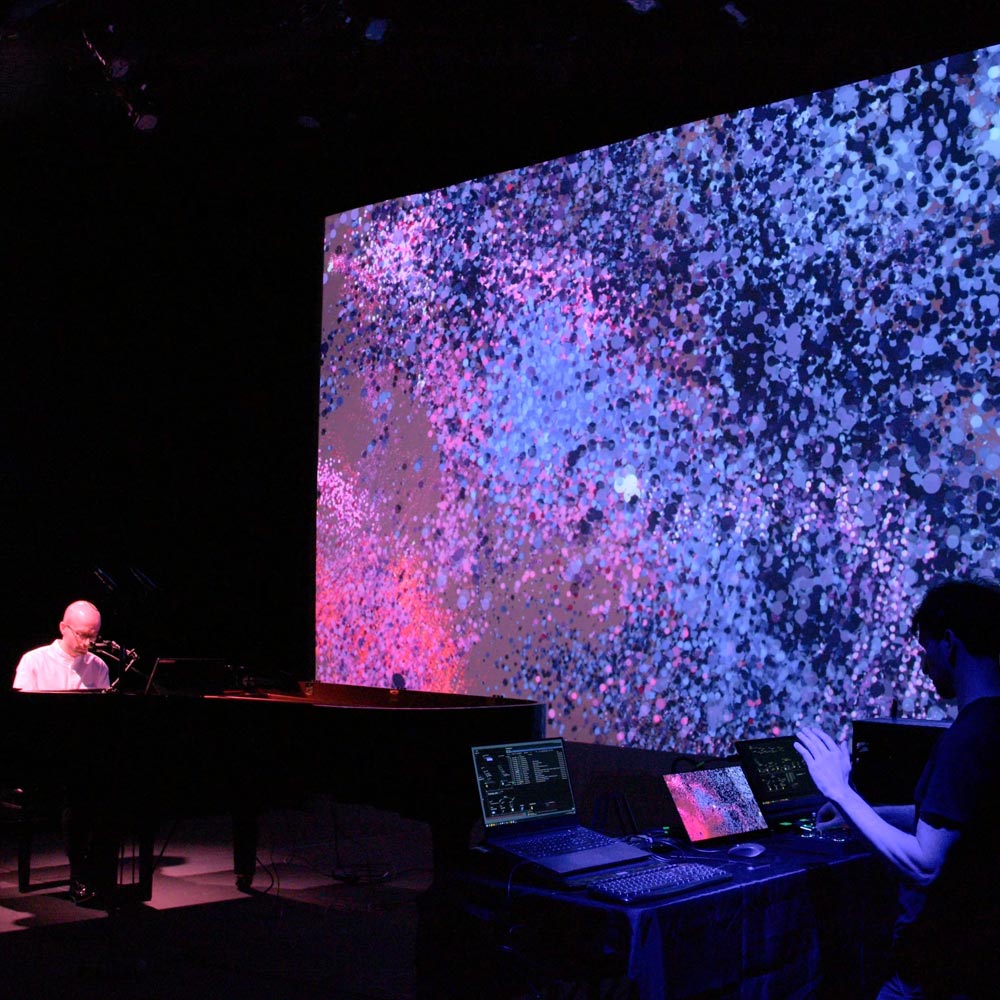
Forms of Resonance
Natan Sinigaglia (IT), Agustin Muriago (AR)
Forms of Resonance is a multisensory performance that expands the boundaries of piano repertoire with its live visuals and interactive technology. Featuring works by Ravel, Liszt, and others, this program transforms the traditional recital by blending classical music with generative digital art.
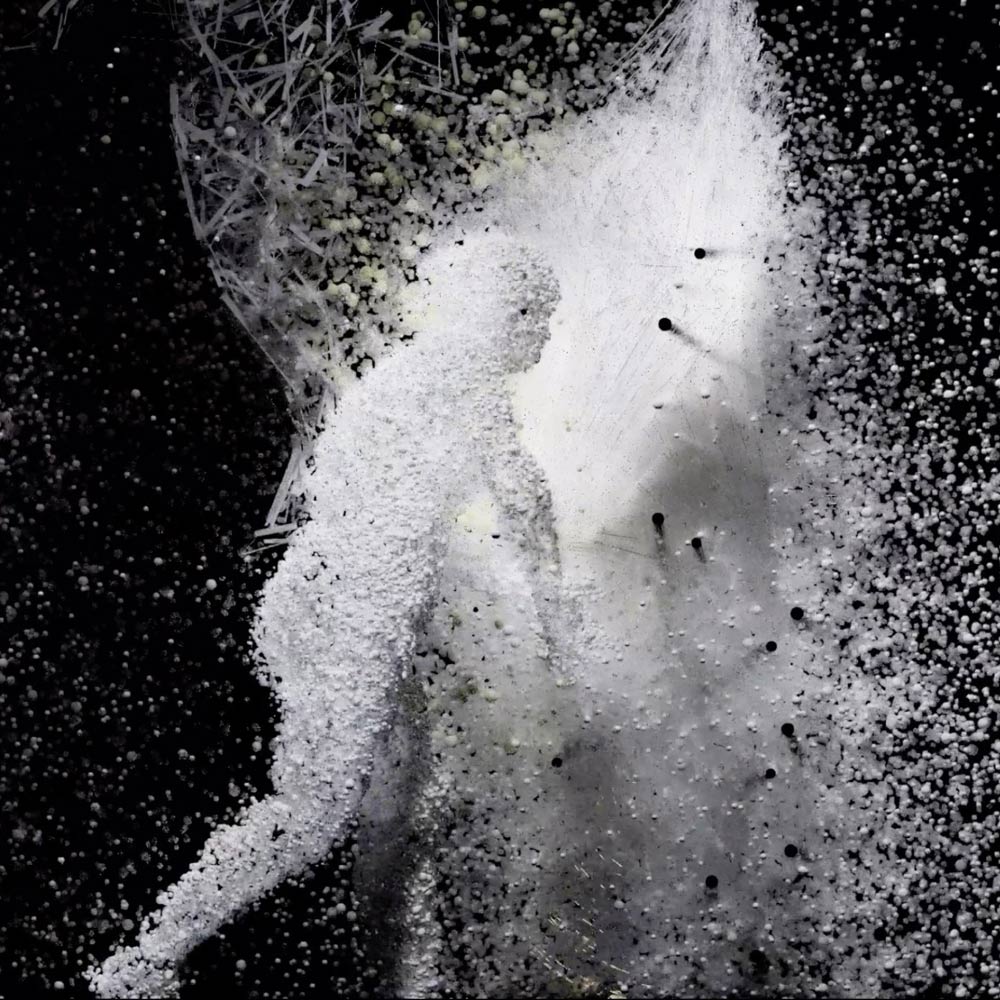
Foolish Flame
Leon Butler (IE), Peter Power (IE)
Foolish Flame is a transdisciplinary piece that explores the impact we have on the fraught frontiers of climate change. Through collective experience, visitors become avatars in an evolving landscape of environmental narratives and inherited cultural trauma—confronting the grief associated with a changing natural world.

Futurelab Night
Ars Electronica Futurelab (AT)
Futurelab Night in Deep Space 8K is where artistic research is transformed into immersive experiences and mesmeric performances—presenting an immersive “future report” of the Ars Electronica Futurelab’s most recent works.
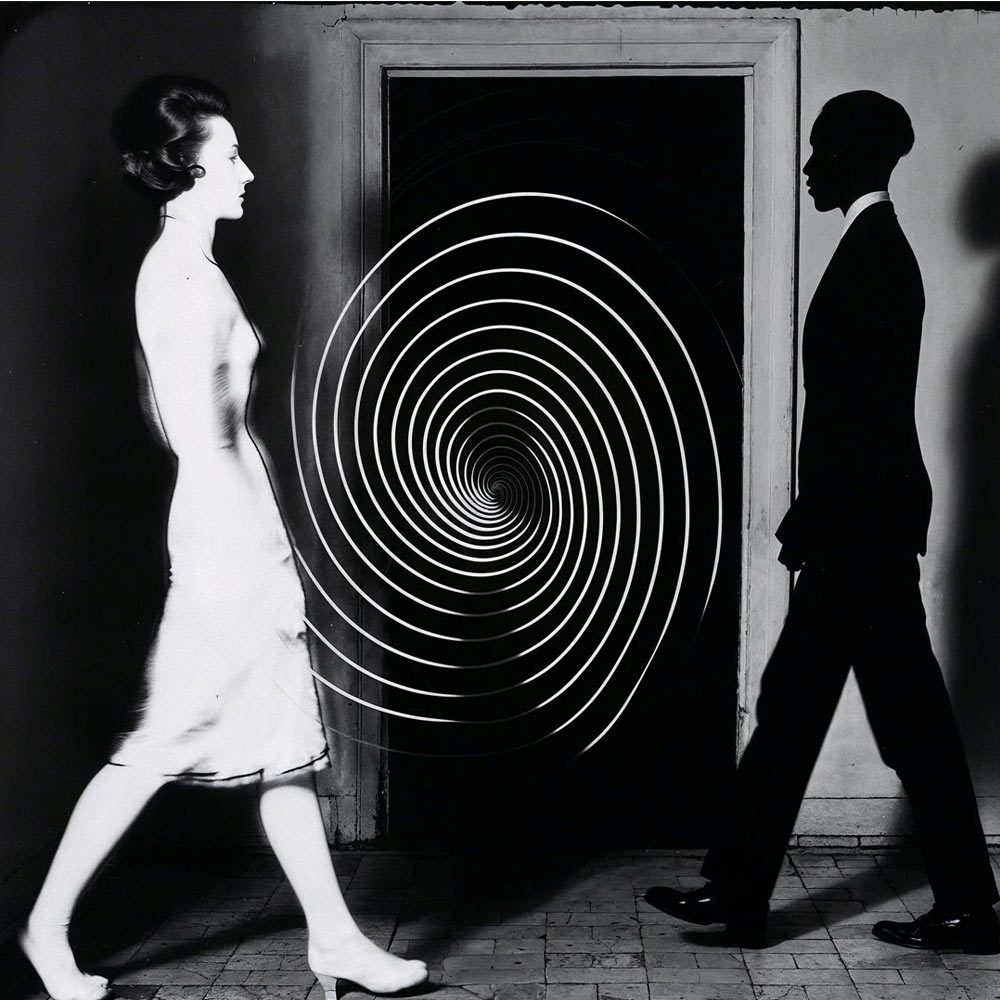
Glitches & Glory
David Szauder (HU)
David Szauder—one of the first artists fully to embrace AI as a creative partner—presents a rapid-fire retrospective that charts the dizzying evolution of machine-made imagery.

Immersive Multisensory Journey into the Myth of Babel
Franz Fischnaller (IT)
Inspired by the myth of Babel, this AI-fueled 3D/8K experience blends art, myth, and technology into a living multisensory realm. In IMJ-MoB, gigapixel imaging and holographic acoustics awaken forgotten voices and reimagine storytelling for the digital age.

Inside the AI War Cloud
Sarah Ciston (US)
What responsibilities do users and makers have in choosing AI tools, when their development can also lead to deadly outcomes at massive scales? Explore the interactive database that investigates both automated warfare and the seemingly innocuous devices we use every day.

Interplayful Sensoric Environments
The Department of Time-based and Interactive Media Art explores interactions between humans, sensors, and a high-resolution projection system. The result is a diverse range of applications and interactive artworks, as well as live performances created in collaboration with dancers and performers.
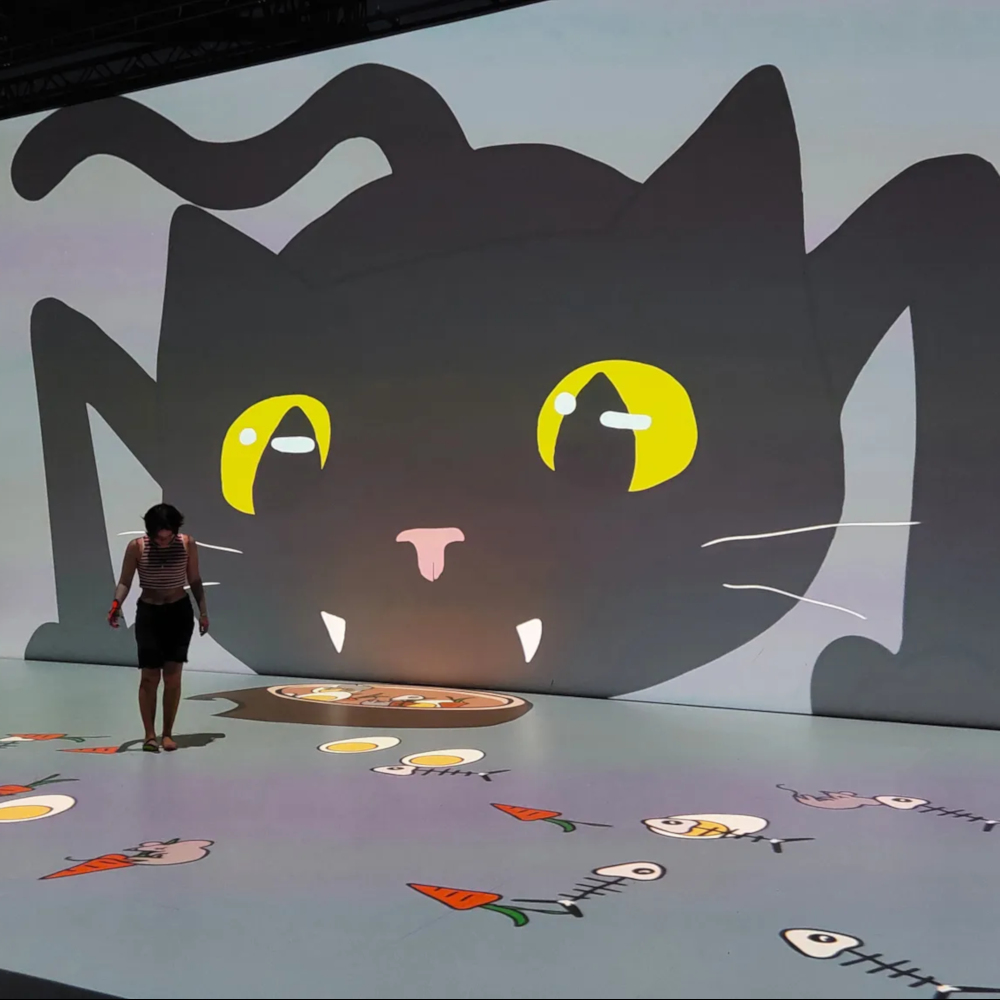
Interplayful Sensoric Environments Part I
Teodor Dumitrache (RO), Pauline Hübner (AT), Egemen Karaaslan (AT), Lun Raaberg (AT)
A major area of research within the Time-Based and Interactive Media Arts Department of the University of Arts Linz is the playful exploration of interactions between humans, sensors, and a high-resolution projection system. Recent works will be presented in Deep Space 8K of the Ars Electronica Center and in Studio 1 at Hauptplatz 8 as part of the University of Arts Linz Campus exhibition.
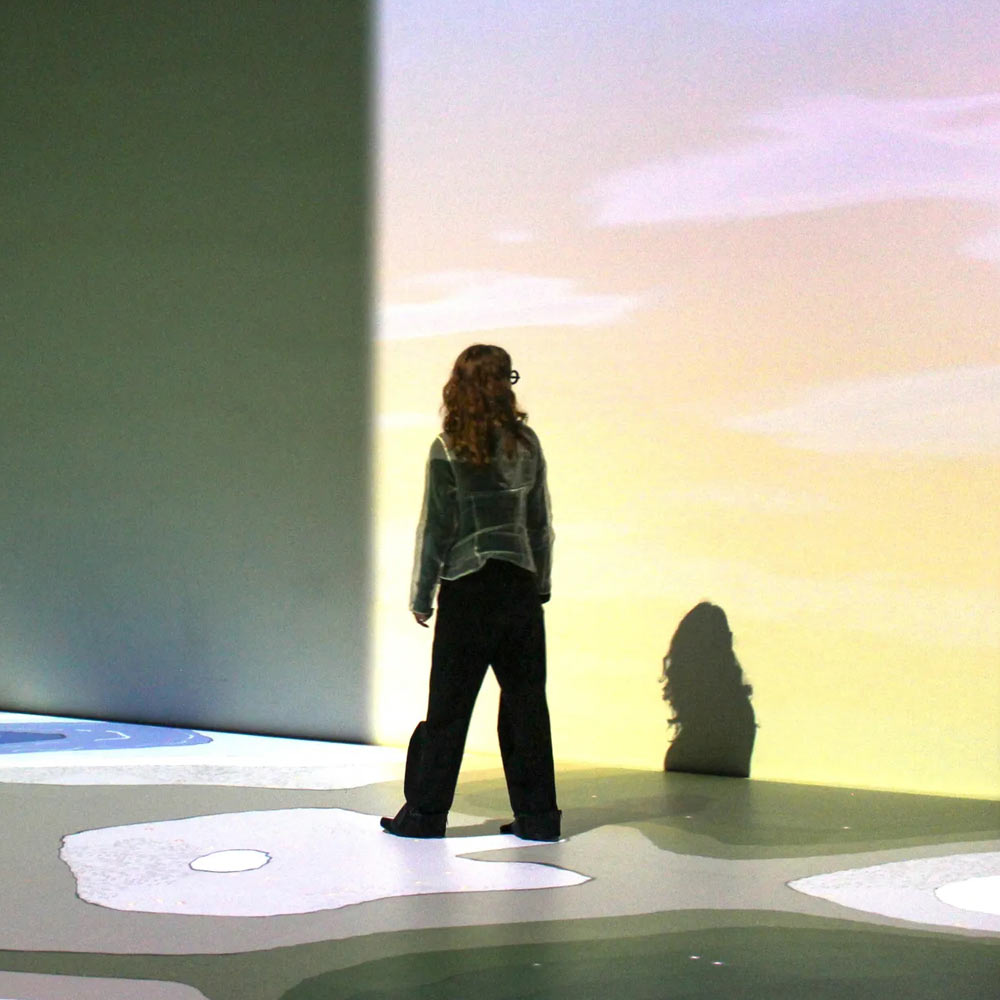
Interplayful Sensoric Environments Part II
Camilla Scholz (DE), Frieda Emmrich (DE), Teodor Dumitrache (RO), Verena Langthaler (AT), Pauline Hübner (AT)
A major area of research within the Time-Based and Interactive Media Arts Department of the University of Arts Linz is the playful exploration of interactions between humans, sensors, and a high-resolution projection system. Recent works will be presented in Deep Space 8K of the Ars Electronica Center and in Studio 1 at Hauptplatz 8 as part of the University of Arts Linz Campus exhibition.
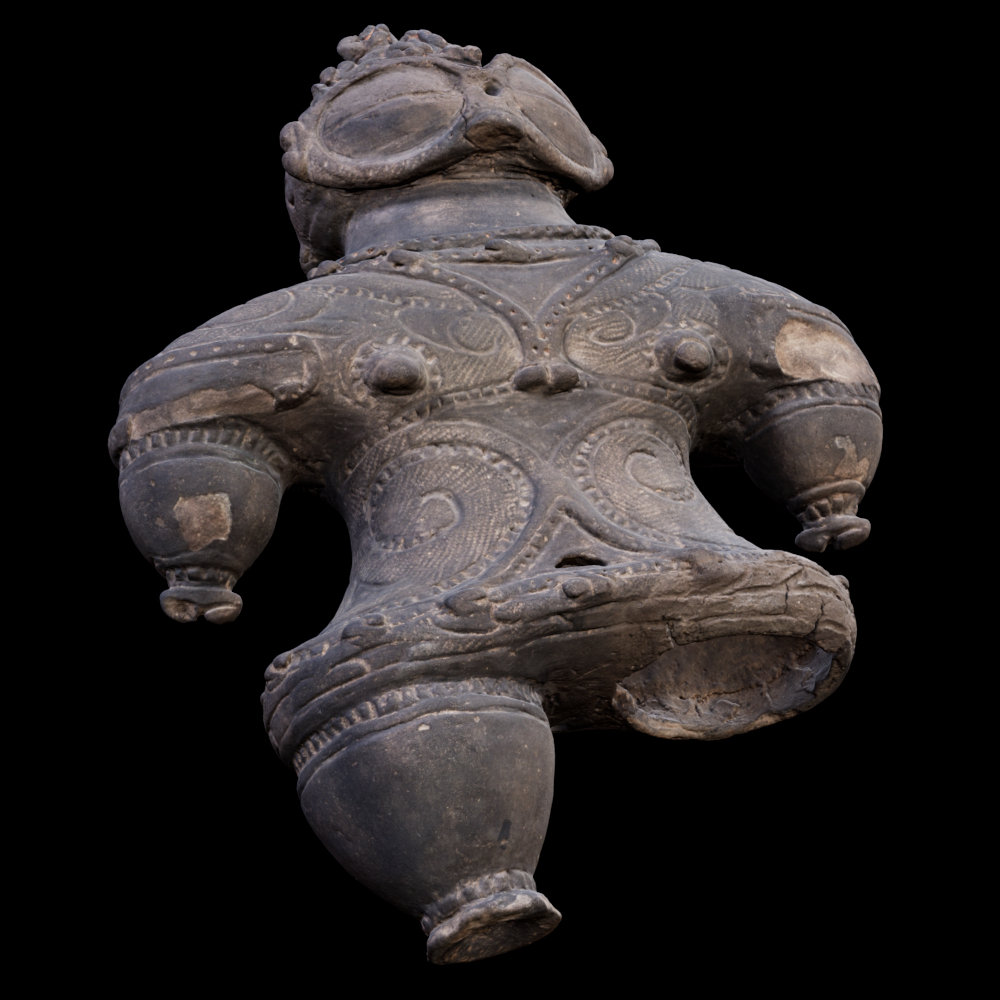
Japan’s cultural treasures and Van Gogh’s “Sunflowers”
NHK and NHK Enterprises (JP)
Japan’s cultural treasures like armor and ukiyo-e are recreated in UHD 3DCG, revealing various new insights and emotions. Van Gogh’s Sunflowers in UHD 3DCG showcases the master’s brilliant techniques in stunning detail.

K-Heritage, Creating Value Through Digital Technology
Korea Heritage Service (KR)
This project illuminates the beauty of Korea’s national heritage through digital media. It features the natural heritage designed by humans to engage with nature and live in harmony with it.
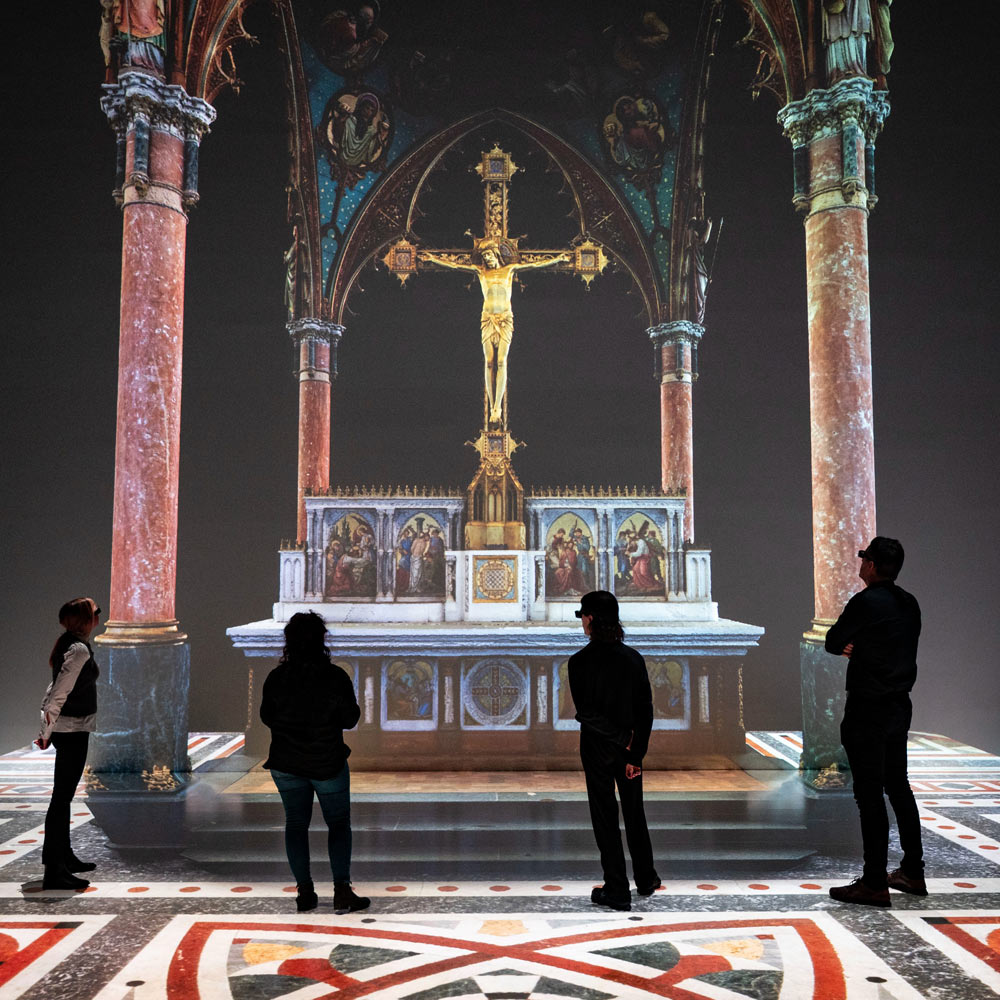
Mariendom Unveiled
Michael Hager (AT)
A virtual journey through St. Mary’s Cathedral brings Austria’s largest church to life digitally, revealing new perspectives on its architecture, artworks, and stained-glass windows.
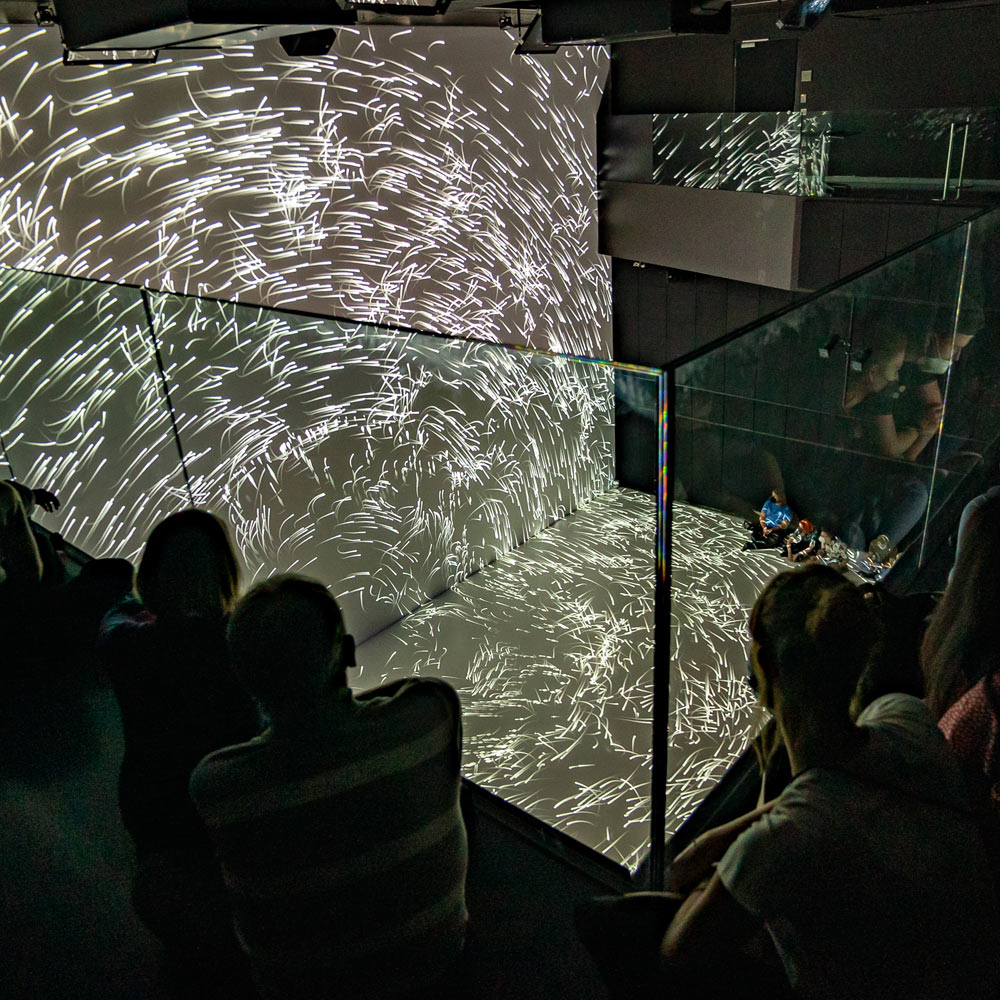
Media Spaces & Generative Art
University of Applied Sciences Upper Austria – Digital Arts (AT)
Studierende der FH Hagenberg arbeiten seit über 10 Jahren mit dem Ars Electronica Futurelab an Semesterprojekten zusammen, in denen sie ihre Ansätze im Bereich der interaktiven und generativen Kunst kreativ ausloten. Einzigartig ist dabei, dass diese Projekte in Medienräumen wie dem Deep Space realisiert werden, die eine besondere Herausforderung darstellen.
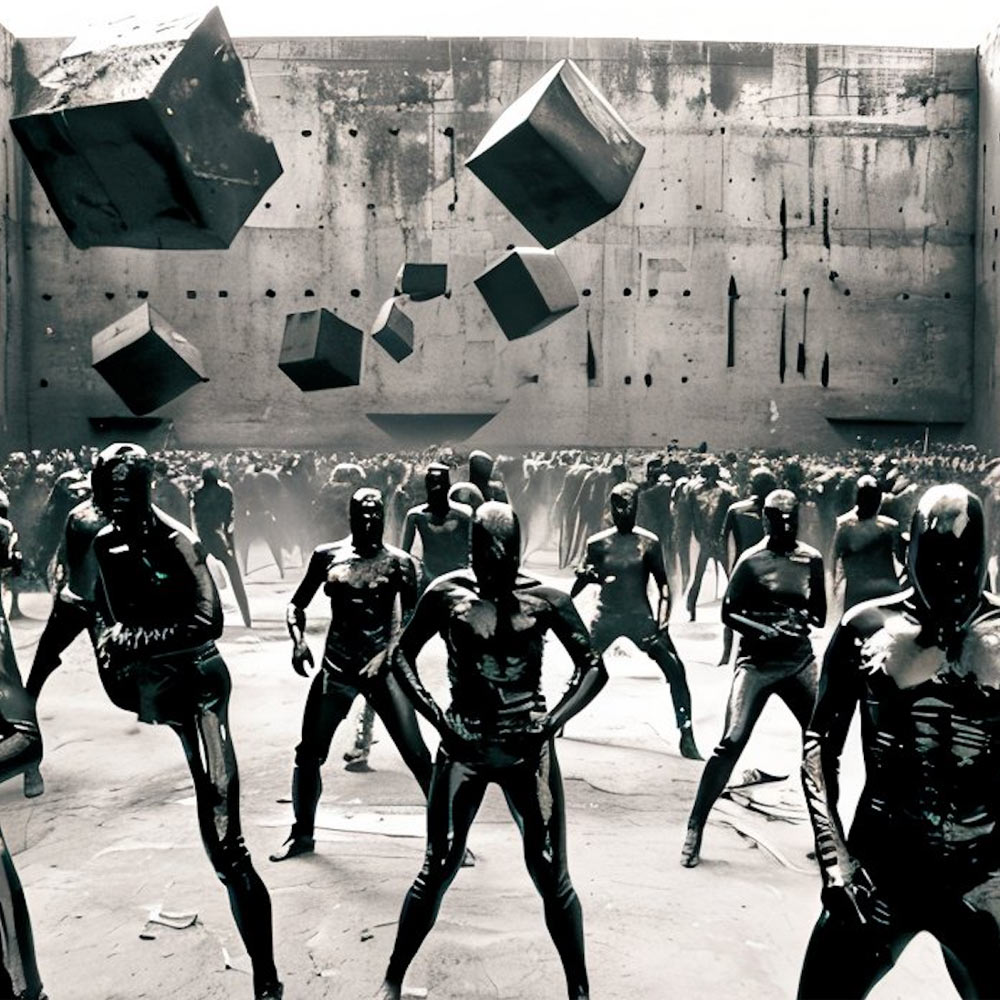
Meet the artist: Alessandro Bavari
Alessandro Bavari (IT)
Pioneer of experimental animation, Alessandro Bavari, presents a recent AI-generated film together with Metachaos (2010), the short film that earned him a Golden Nica. The session explores how his artistic language has evolved across media and time.
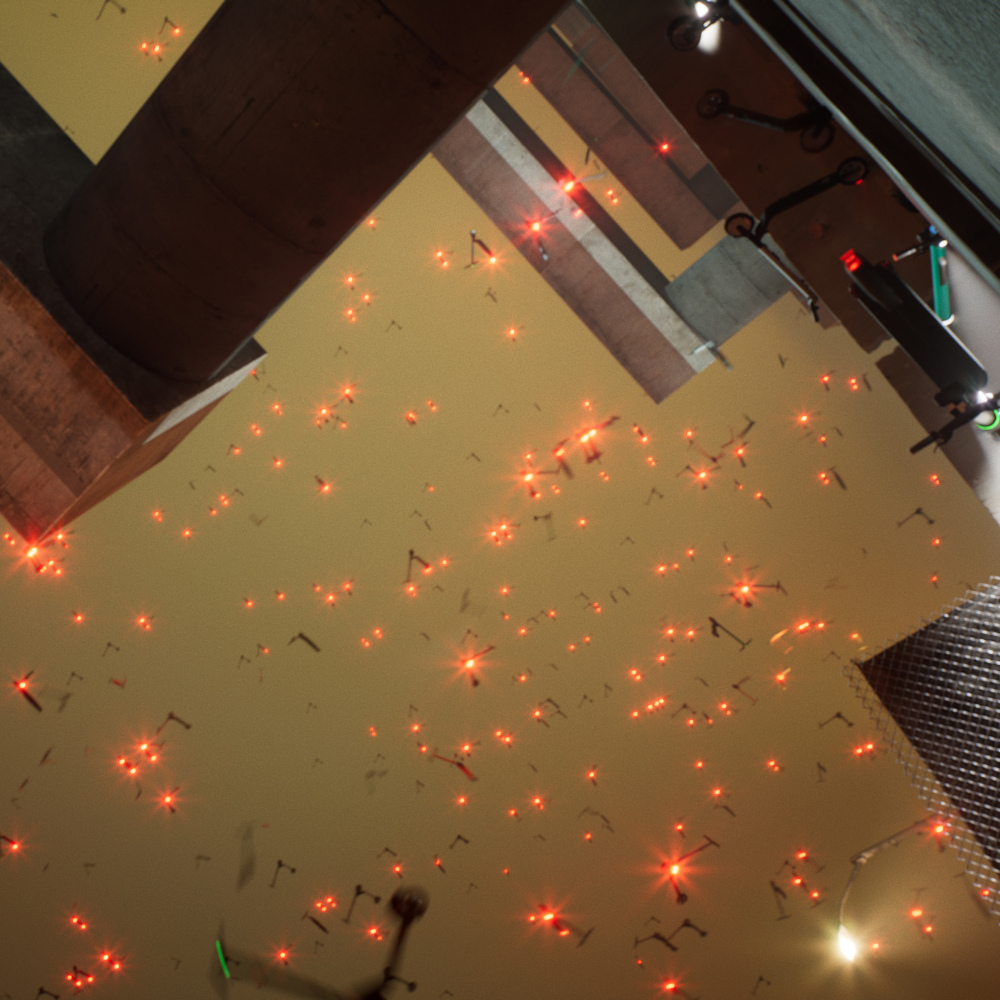
Meet the artist: Alona Rodeh
Alona Rodeh (IL/RO)
Alona Rodeh, artist, scenographer, and urban planner, is renowned for her nuanced engagement with public space—especially the city at night. Rodeh will present her awarded work CORE DUMP, alongside two additional works: Fogging (2025) and Runway Freefall (2022–2024).
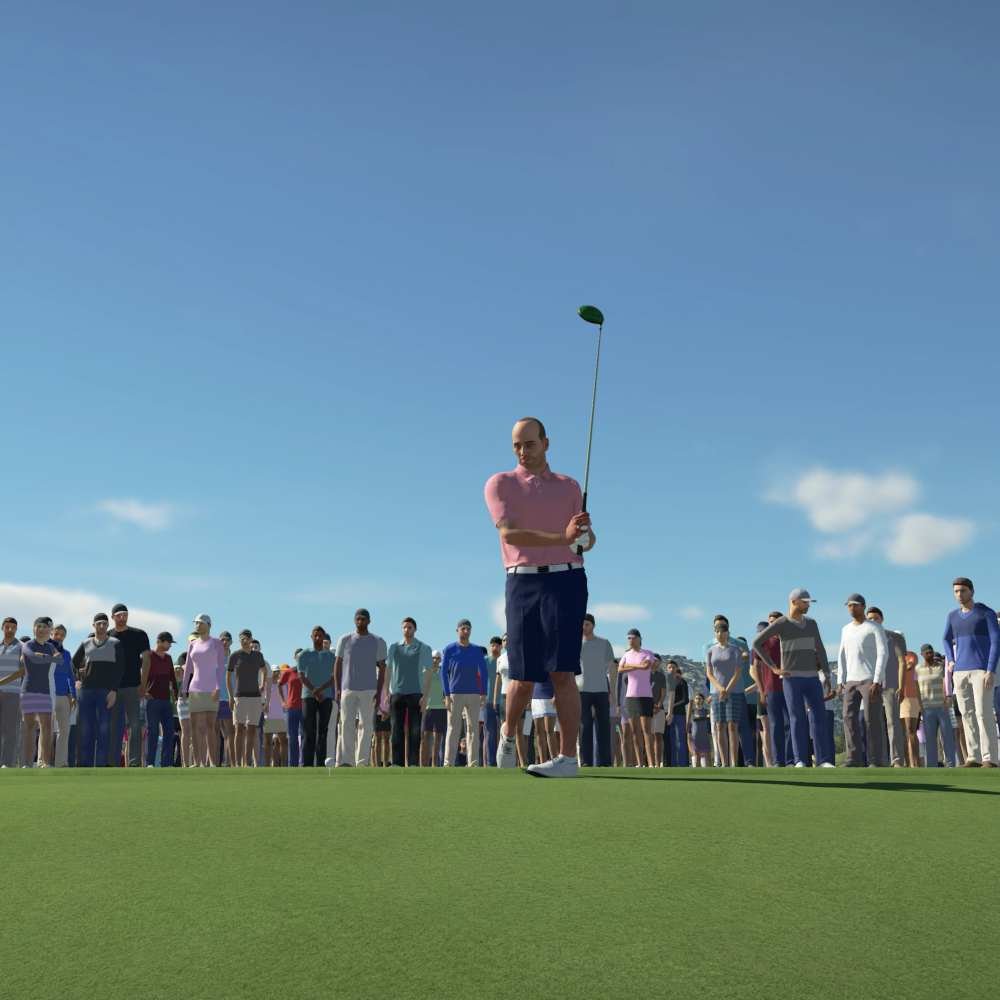
Meet the artist: Collective Total Refusal
Total Refusal (AT)
Winners of an Honorary Mention at this year’s Prix Ars Electronica in the New Animation Art category, the pseudo-Marxist media guerrilla Total Refusal will present their latest work World at Stake, which offers a sharp reflection on collective inertia in the face of global crisis.
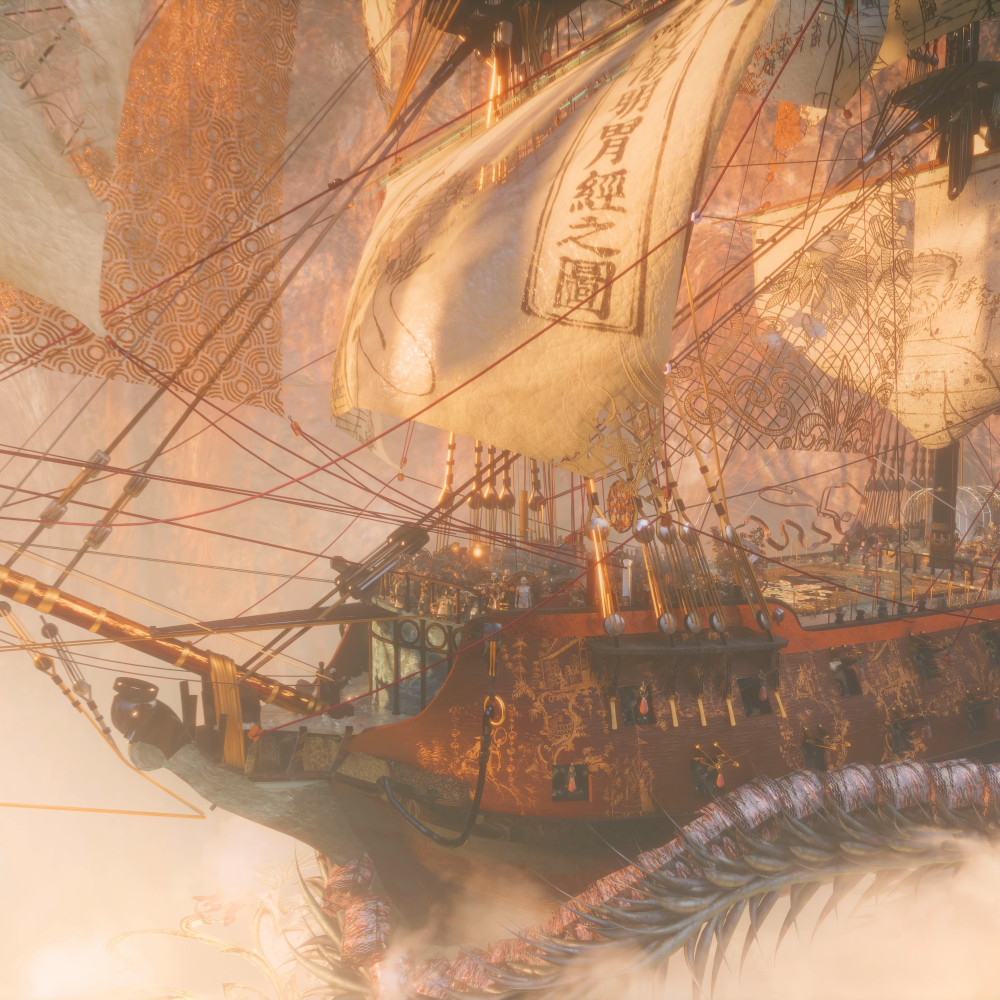
Meet the artist: Wendi Yan
Wendi Yan (CN/US)
Grand Prix Recipient of the 6th VH Award, Wendi Yan, presents Dream of Walnut Palaces, a visually rich film that interweaves Taoist thought, science history, and animation. A jeweled scholar's skeleton embarks on a westward journey, envisioning a world where Eastern and Western knowledge meet on equal ground.
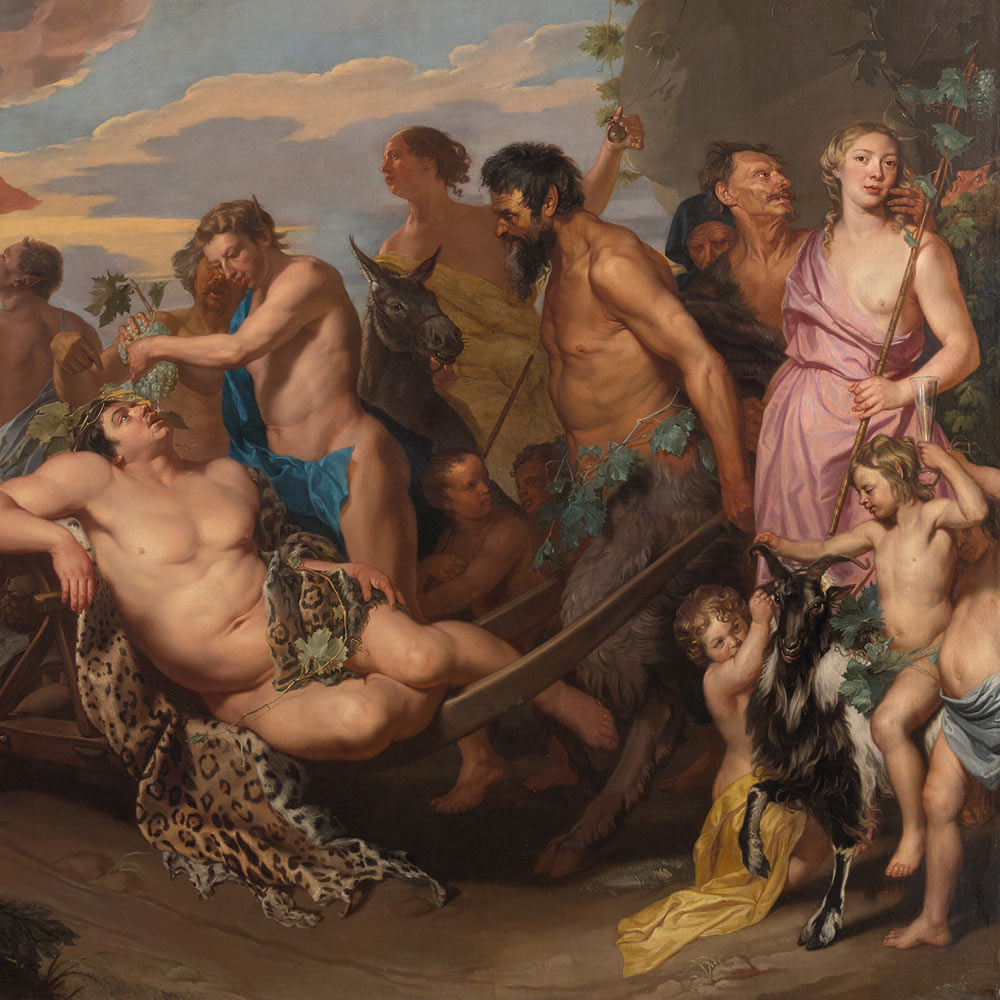
Michaelina Wautier’s “The Triumph of Bacchus” / Kunsthistorisches Museum Wien
Kunsthistorisches Museum (AT), Charlotte Roosen (BE)
Marvel at the largest and most unusual painting by Flemish artist Michaelina Wautier—an artist of remarkable technical skill, bold imagination, and subtle humor, whose life remains shrouded in mystery.
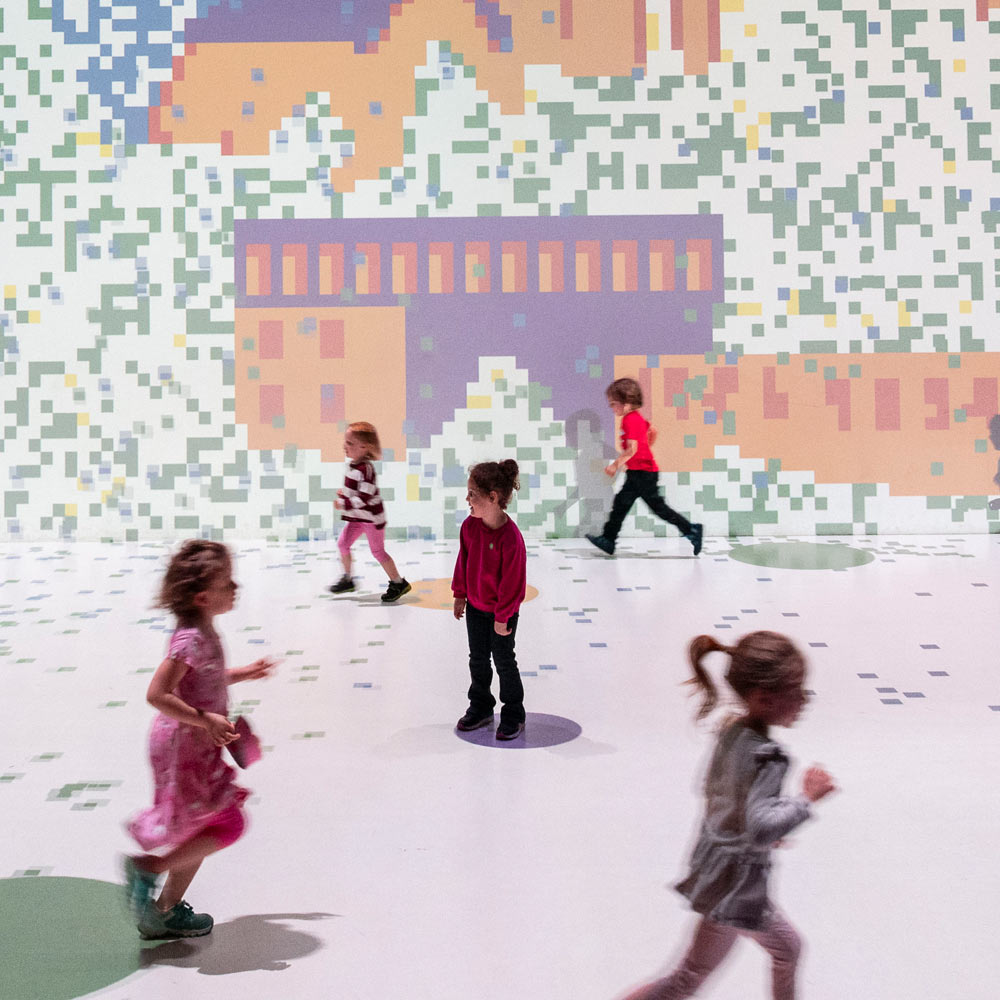
Playtime
Isabel Schulz (AT), Pat Göckert (AT), Pal Klusacek (AT), Axel Bräuer (AT), Benjamin Brunnbauer (AT), Ildiko Mayr (AT), Julian Holzer (IT)
Students enrolled in the degree program Time-Based and Interactive Media Art at the University of Arts Linz have developed five interactive games tailored specifically to the needs and interests of our youngest visitors. Colorful, action-packed and super fun—here, children can actively engage in imaginative worlds and experience digital technologies in a playful way.
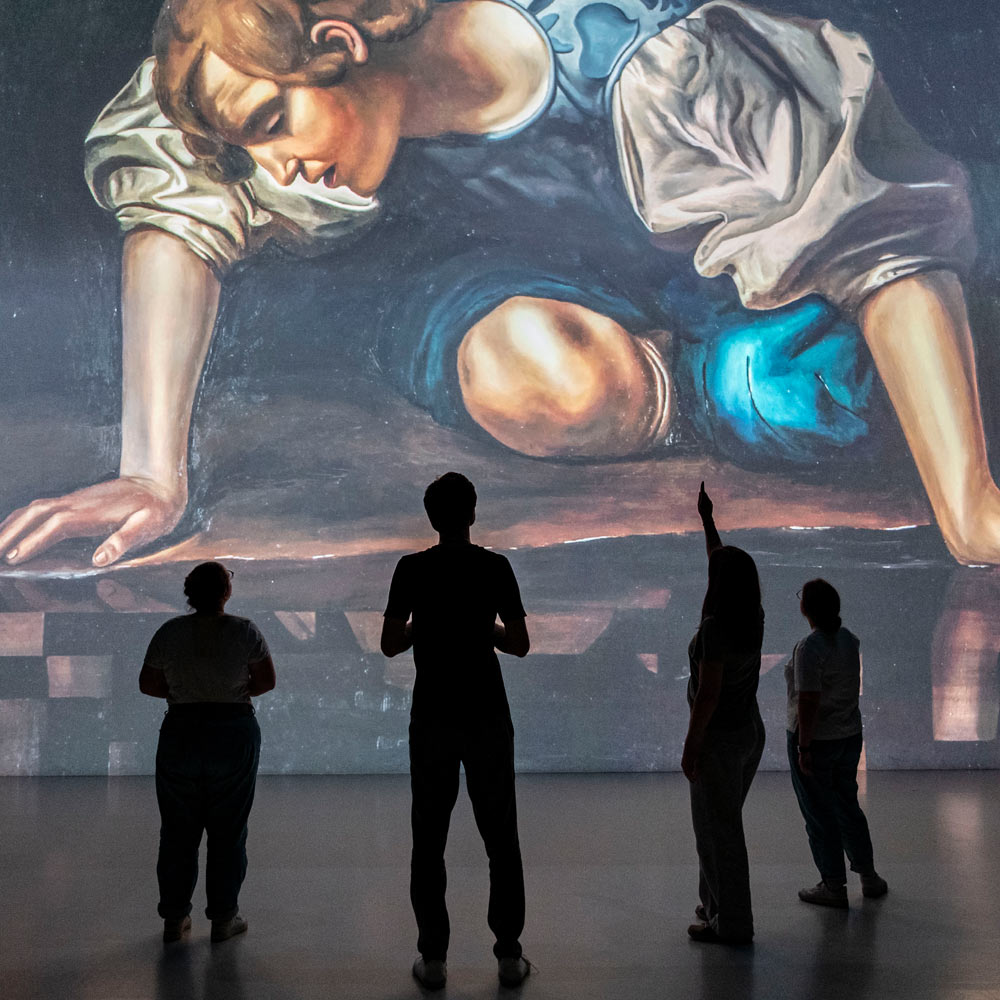
Quantum Computers & Art
Arianna Crippa (IT), Yahui Chai (CN), Omar Costa Hamido (PT), Paulo Itaborai (BR), Karl Jansen (DE)
How can quantum computers create new art? This presentation will answer this question with projects on quantum computer music and quantum painting.
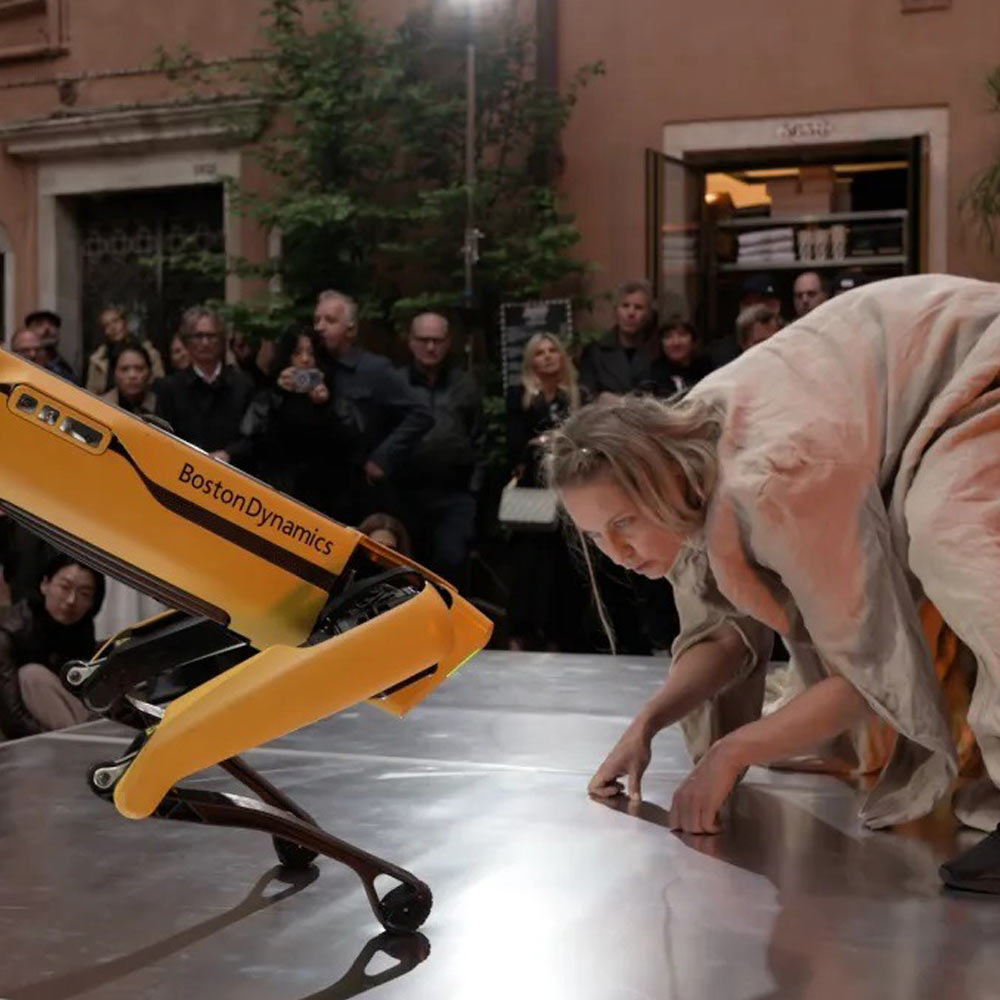
SPOTSHOTBEUYS
Silke Grabinger (AT)
Silke Grabinger’s SPOTSHOTBEUYS reinterprets Beuys’ action in a multifaceted and ironic manner. In this performance, she confronts the robotic dog “Spot”, a symbol of contemporary technological innovation.

SUNFLOWER / BUTTERFLY ORCHID
Chia-Hui Lu (TW)
SUNFLOWER / BUTTERFLY ORCHID are multimedia performances exploring life, resilience, and hope. They use motion capture, 3D modeling, and real-time music recognition software to synchronize visuals. The works reflect the struggle for beliefs, love, and hope, while promoting peace, kindness, and cultural heritage.
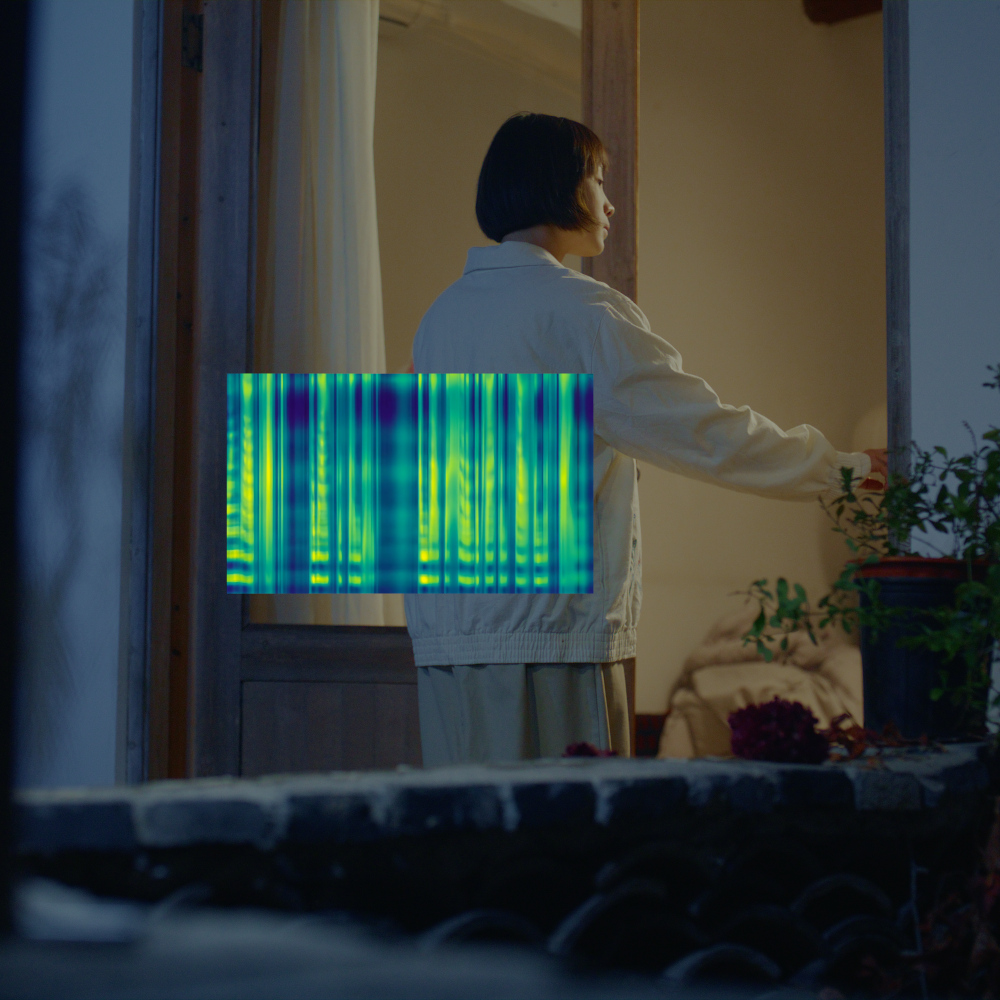
The 6th VH AWARD Part I
HUDA x MUNGOMERY—Dani Huda (ID), Charlotte Mungomery (AU), Tianyi Sun (CN), Fiel Guhit (PH), Wendi Yan (CN)
The 2025 Ars Electronica Festival presents the five newly commissioned works of the 6th VH AWARD, selected for their experimental and transcultural approaches. From mythology and ecology to machine consciousness and speculative histories, these works reflect a diverse and dynamic landscape of artistic inquiry shaped by Asia’s past, present, and future.

The 6th VH AWARD Part II
Inhwa Yeom (KR), Lêna Bùi (VN), Wendi Yan (CN)
The 2025 Ars Electronica Festival presents the five newly commissioned works of the 6th VH AWARD, selected for their experimental and transcultural approaches. From mythology and ecology to machine consciousness and speculative histories, these works reflect a diverse and dynamic landscape of artistic inquiry shaped by Asia’s past, present, and future.
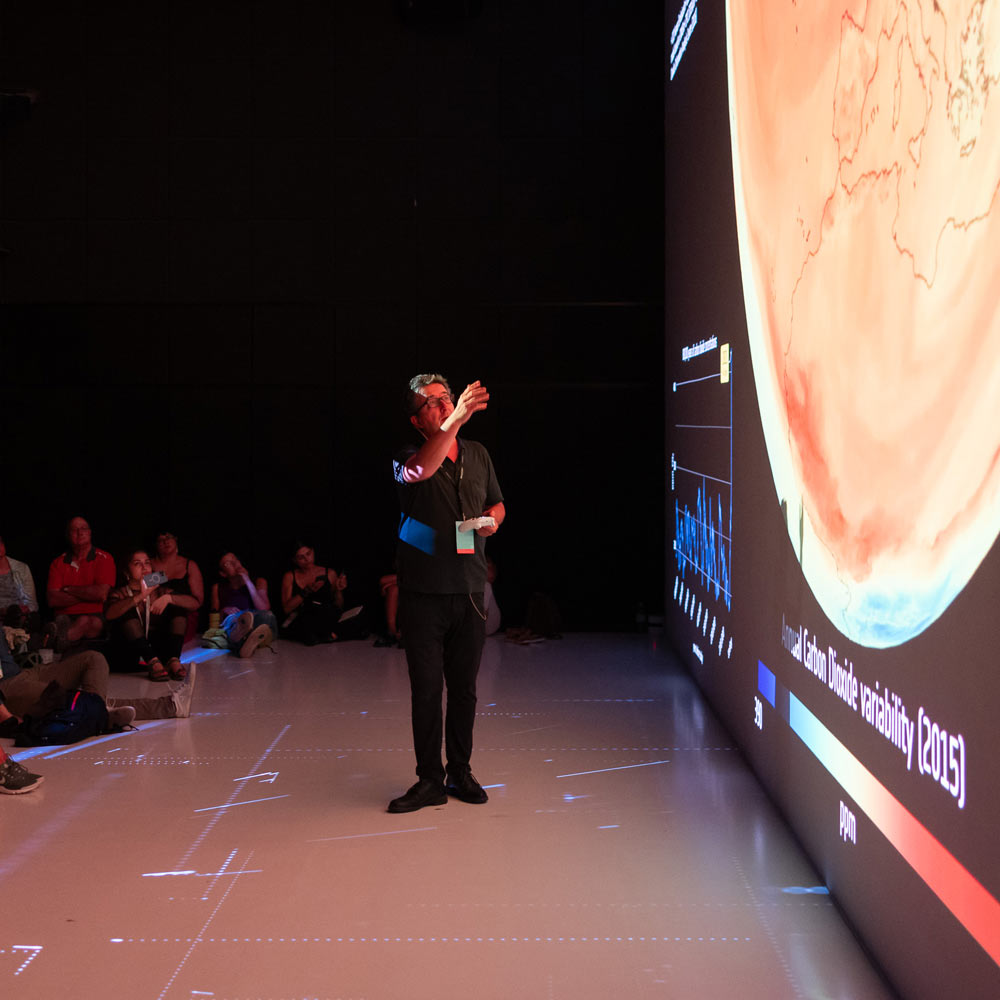
The Art of Science
Ars Electronica Solutions (AT)
The Art of Science transforms science into a multisensory experience, where data becomes sound and Artificial Intelligence becomes tangible. Satellite imagery reveals the invisible.
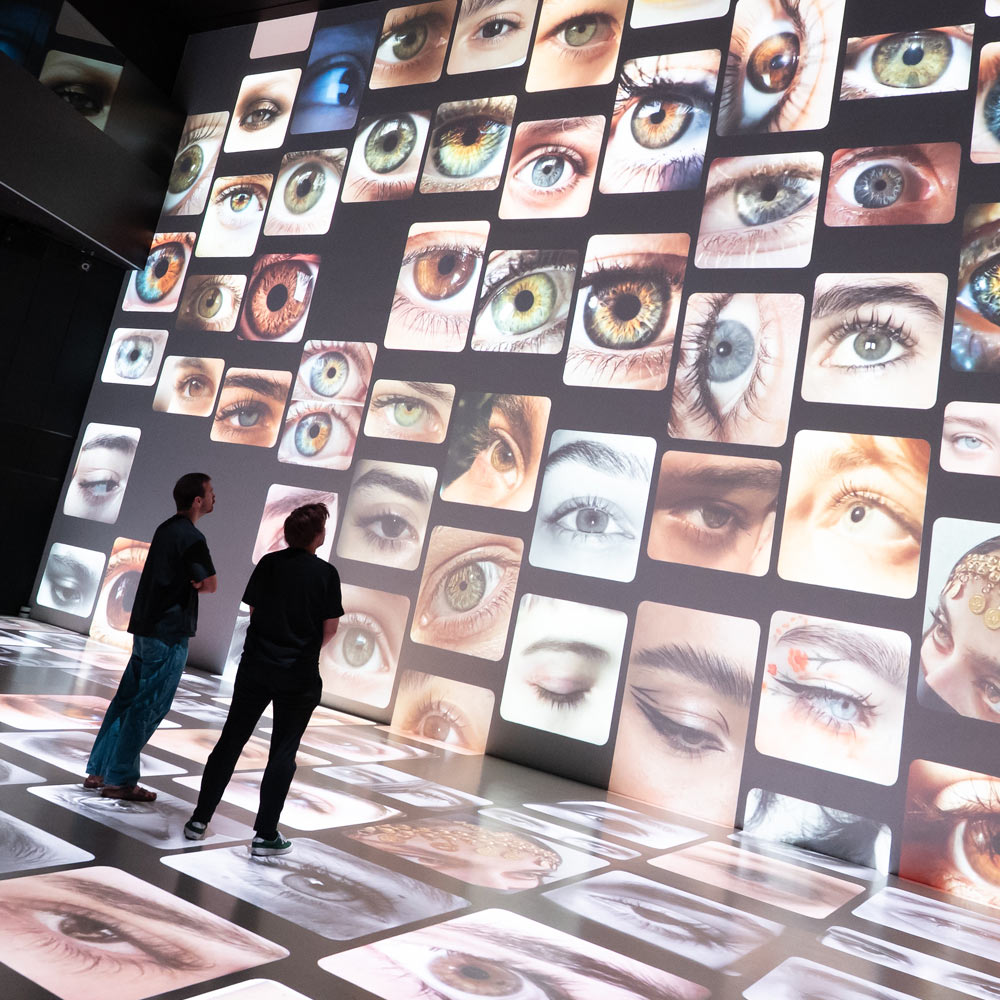
The Experience Machine
Deniss Boldavesko (DE), Benedikt Pfisterer (AT)
Experience pleasure like never before! Let your brain indulge in experiences so real, you won’t believe they’re artificial. The ultimate escape from reality—where every moment is pure bliss! Are you ready to indulge in infinte jest? Don’t miss out on the future of enjoyment!
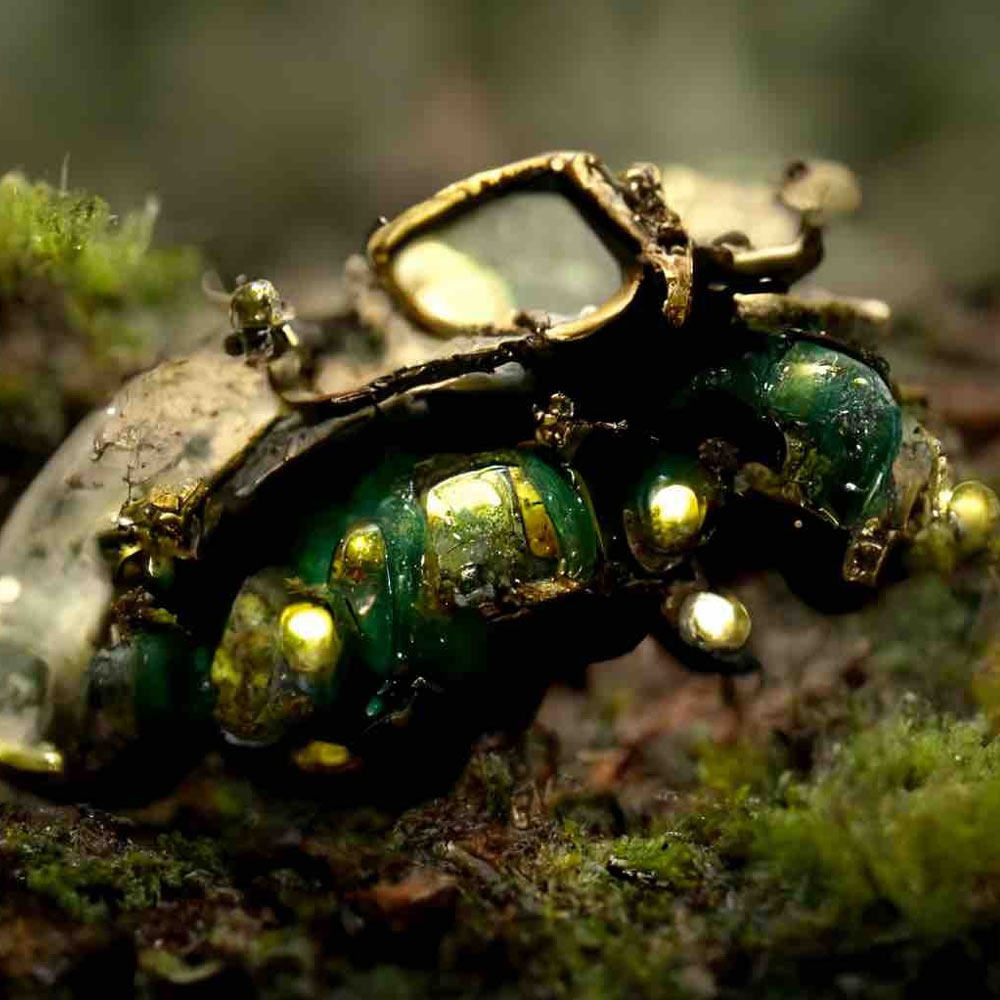
The Mask of Time
Mattia Casalegno (IT), Maurizio Martusciello aka Martux_m (IT)
This audiovisual work by Mattia Casalegno and Martux_m revives Fondazione Giorgio Cini’s Teatro Verde through hyper-real avatars, AI, and 3D animation. Drawing from the archives, it explores the theatre’s past, present, and futures, weaving nature, culture, and technology into a visionary narrative.
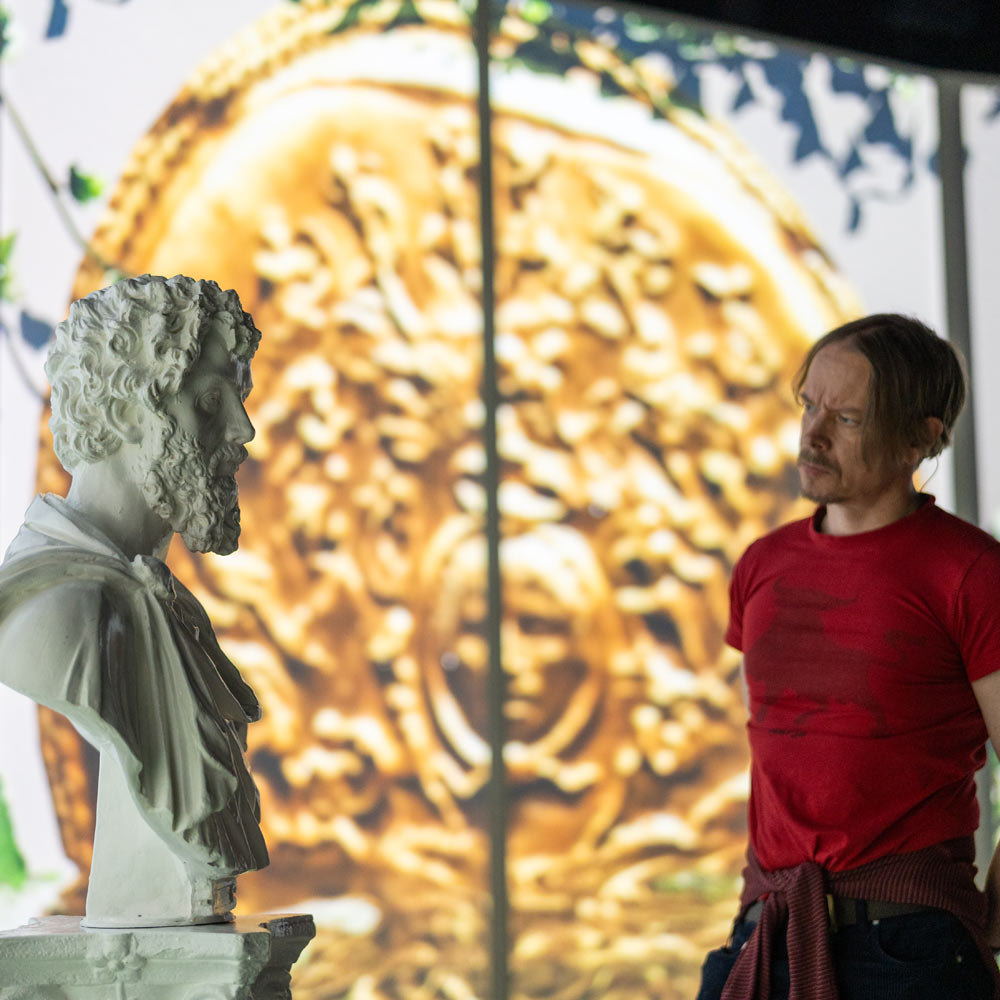
The Trial Against Humanity
Det Norske Teatret (NO)
The world teeters on the brink of collapse. The Artificial Intelligence Omnitron proposes a radical solution: to eradicate the species responsible for the chaos—humans. This interactive performance titled The Trial Against Humanity invites the audience to question and defend themselves against Omnitron’s accusations.

Through the Magnifying Glass / National Gallery Washington
National Gallery of Art (US), Eve Straussman-Pflanzer (US)
As the National Gallery of Art adds more works by early women artists to its collection, what are we learning about these relatively understudied painters? Explore three works in remarkable detail and discover how the museum’s studies add to our understanding of each artist’s process and life.
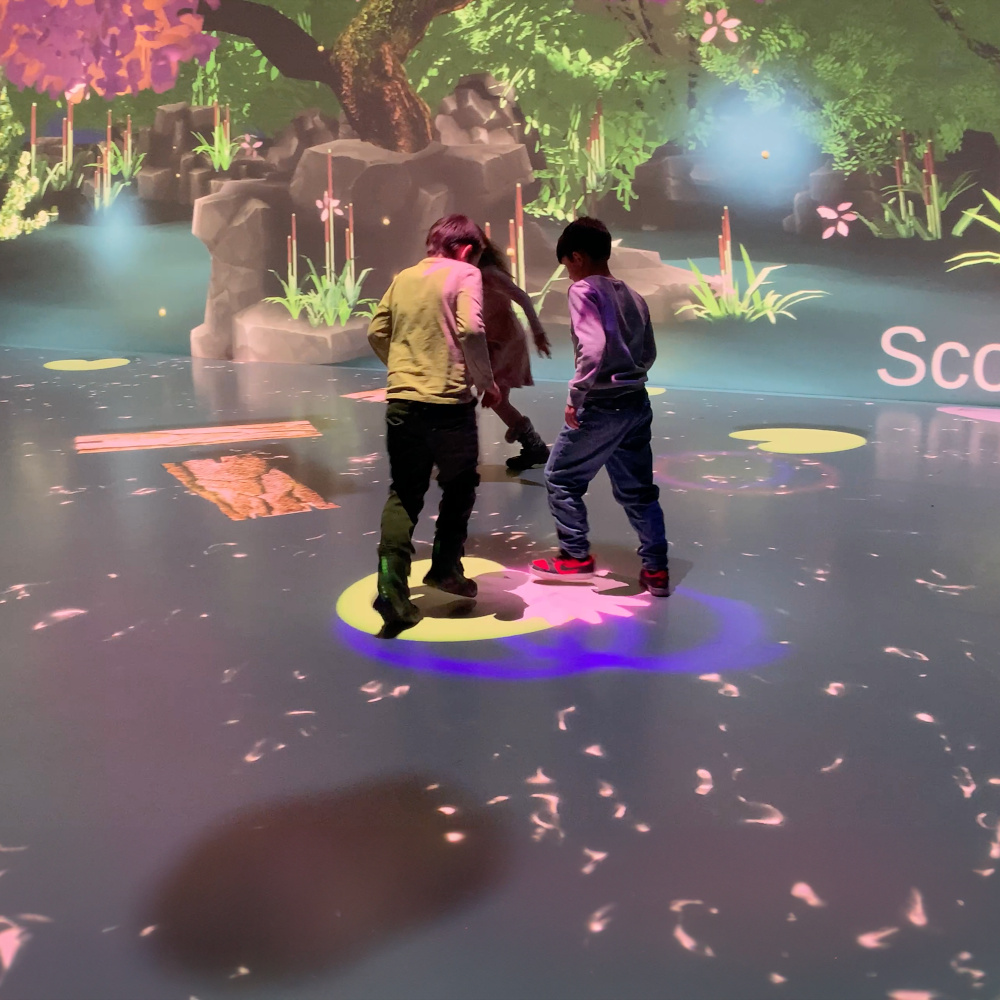
Whisper of the Woods
Natalie Schmitzberger (AT), Romana Schned (AT), Tuana Sevik (AT)
Whisper of the Woods is an interactive project where you find yourself in a magical forest. You have to jump on objects such as logs, stones, and lily pads floating on a water surface. By gathering these objects, light energy accumulates, and the forest is saved.